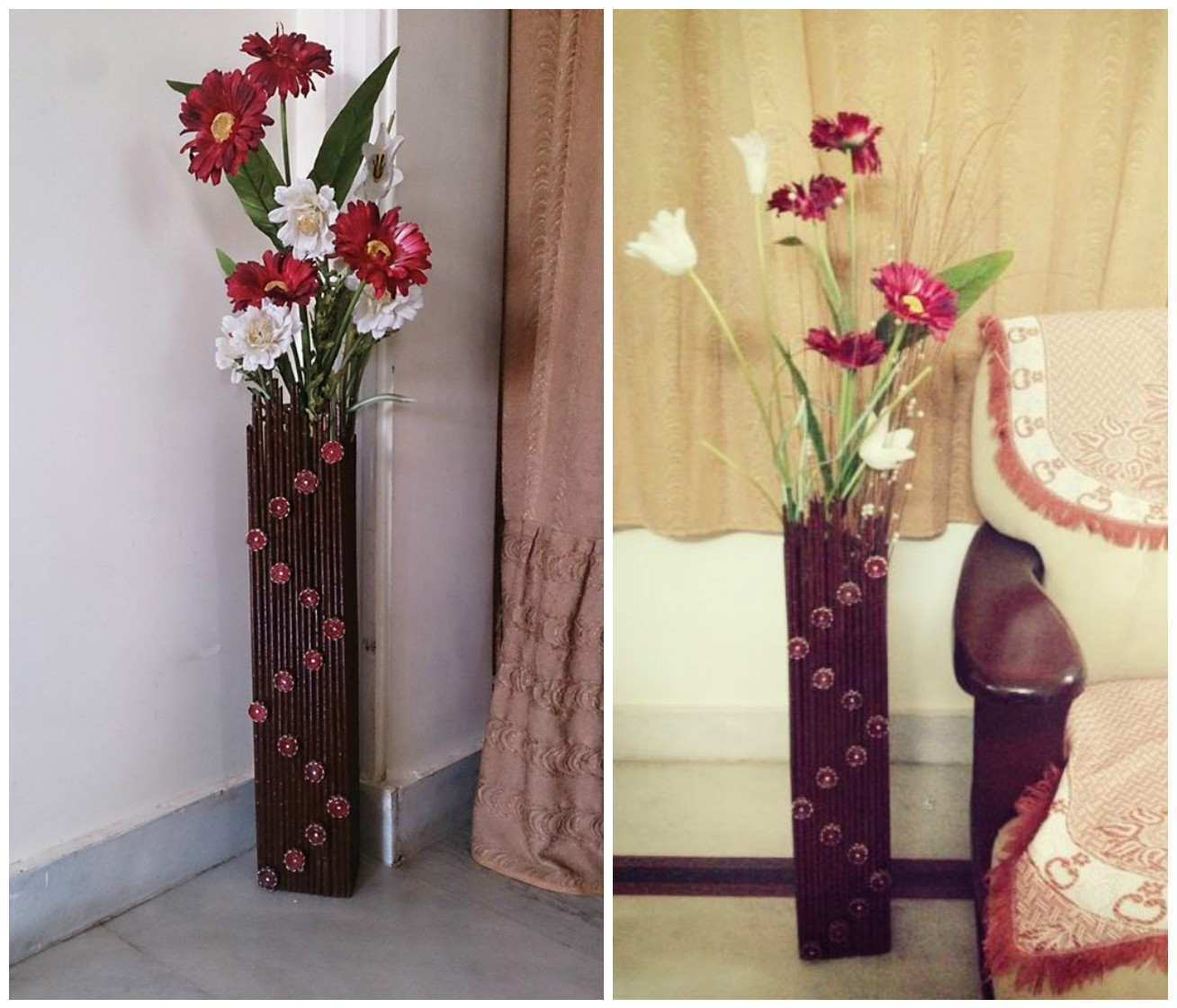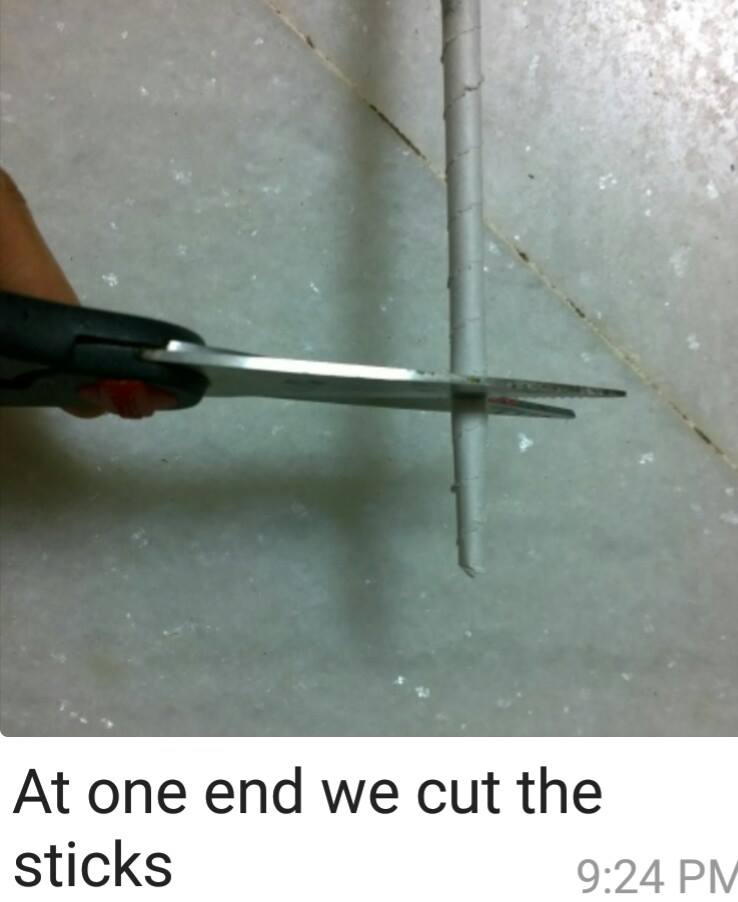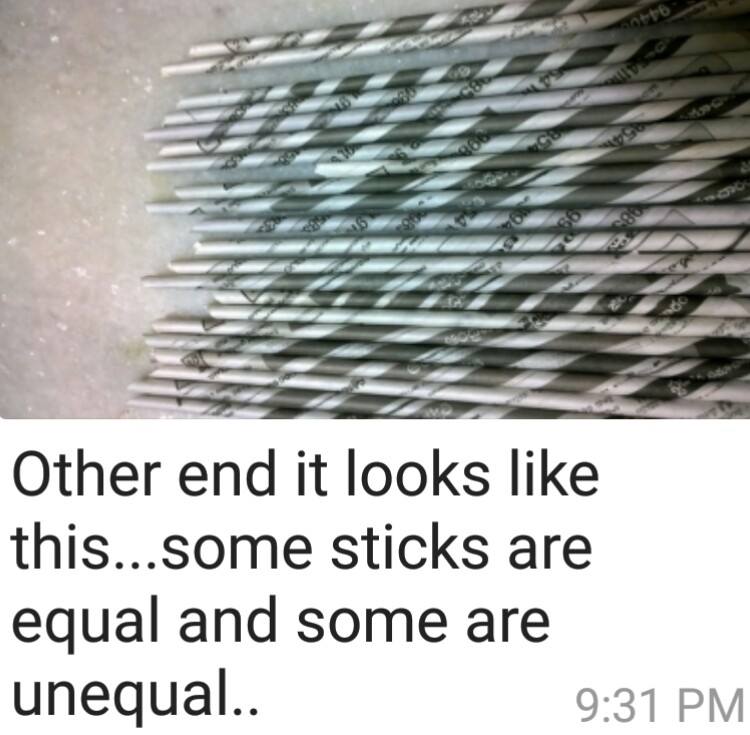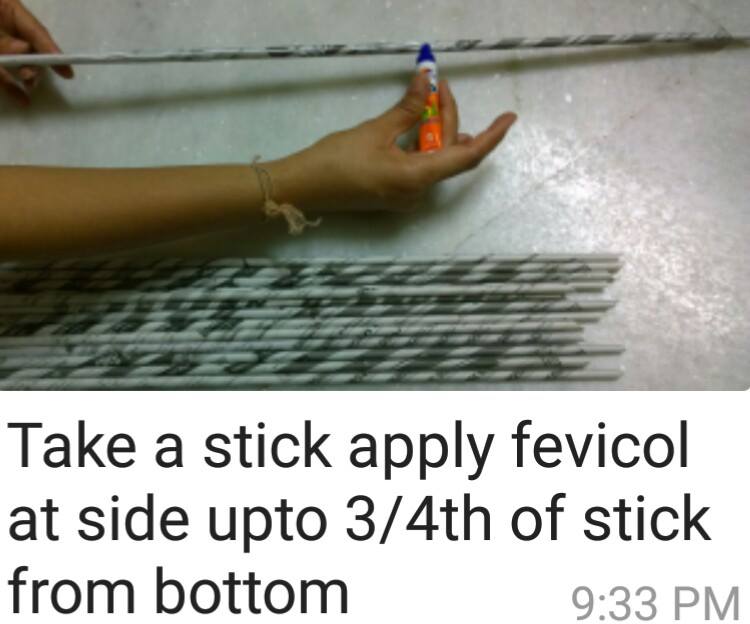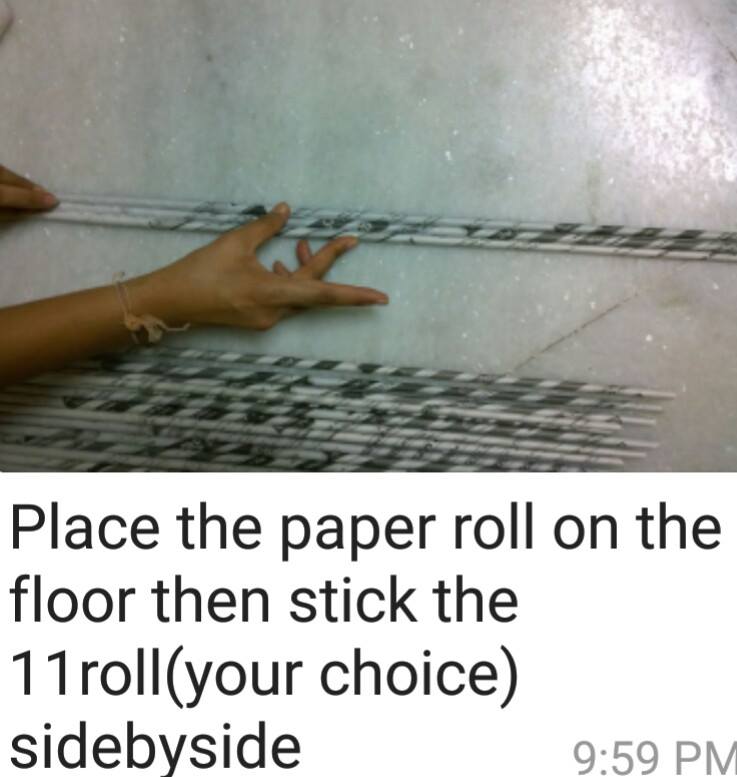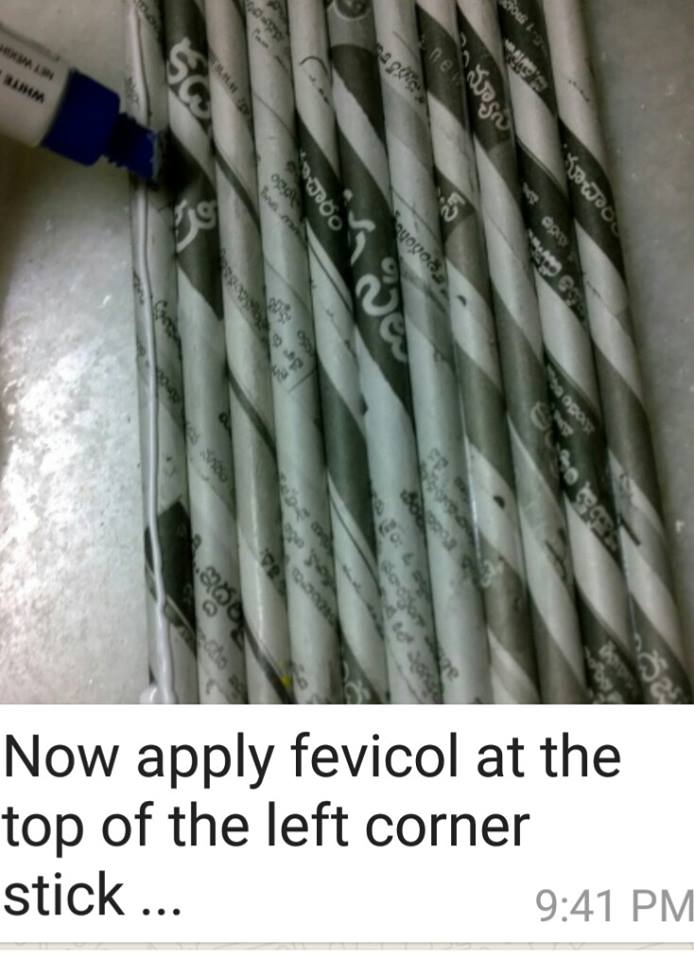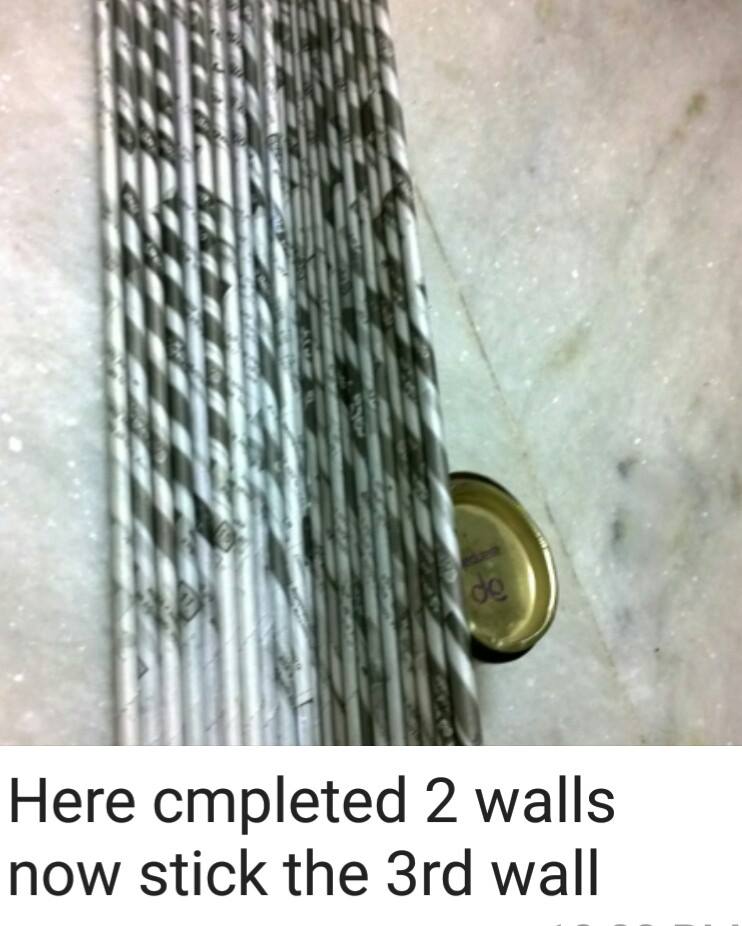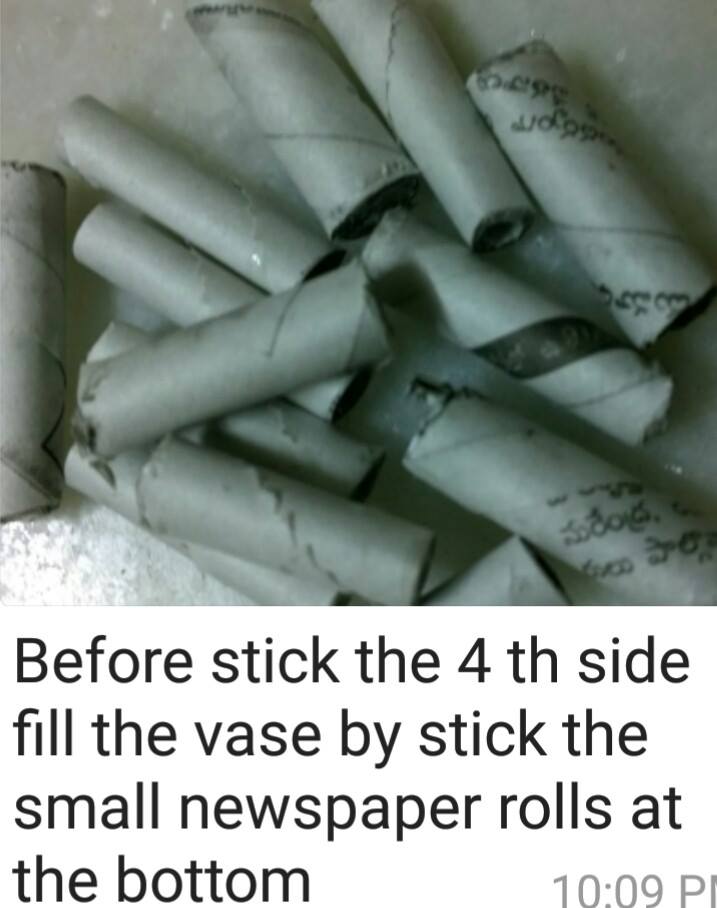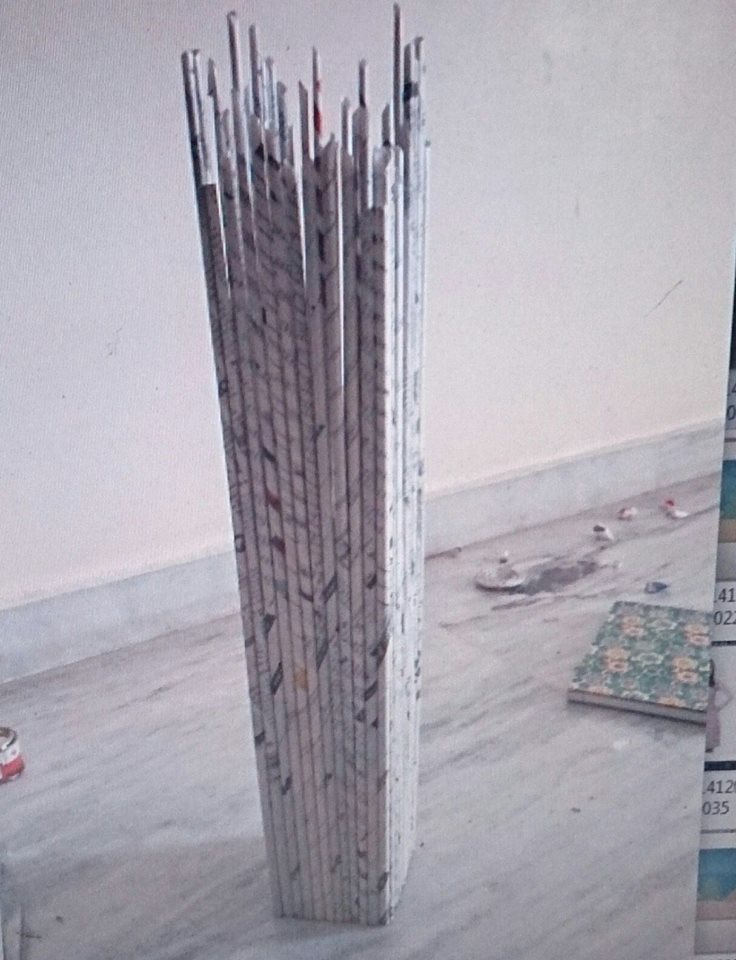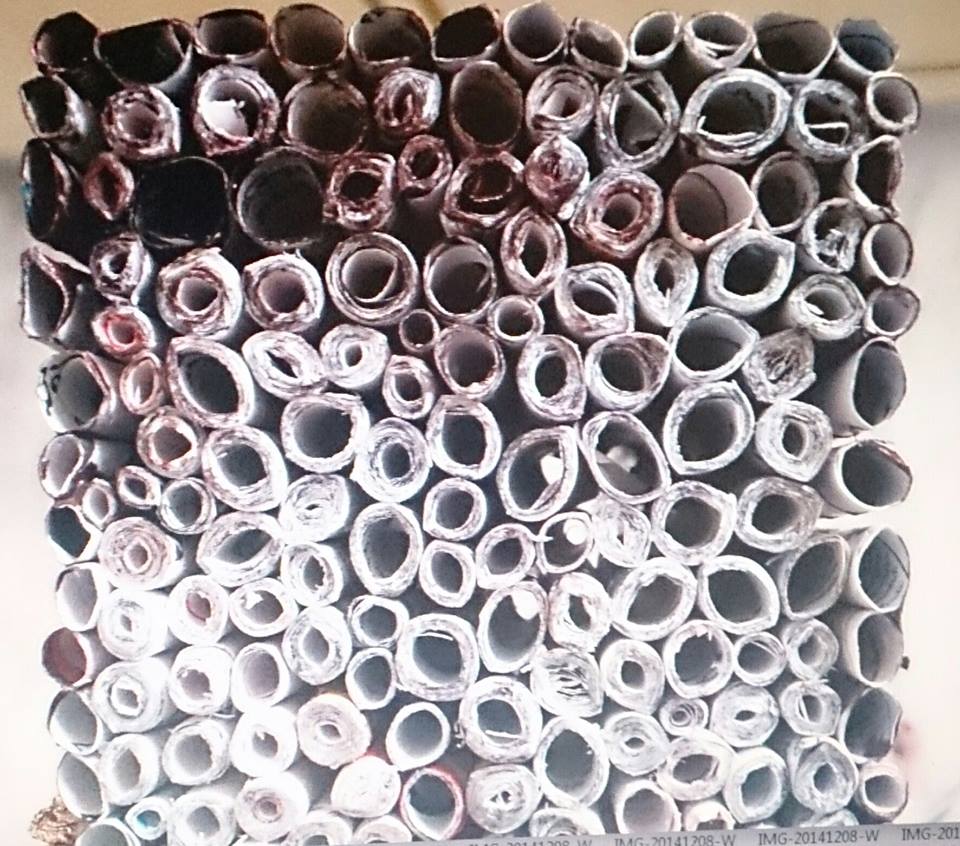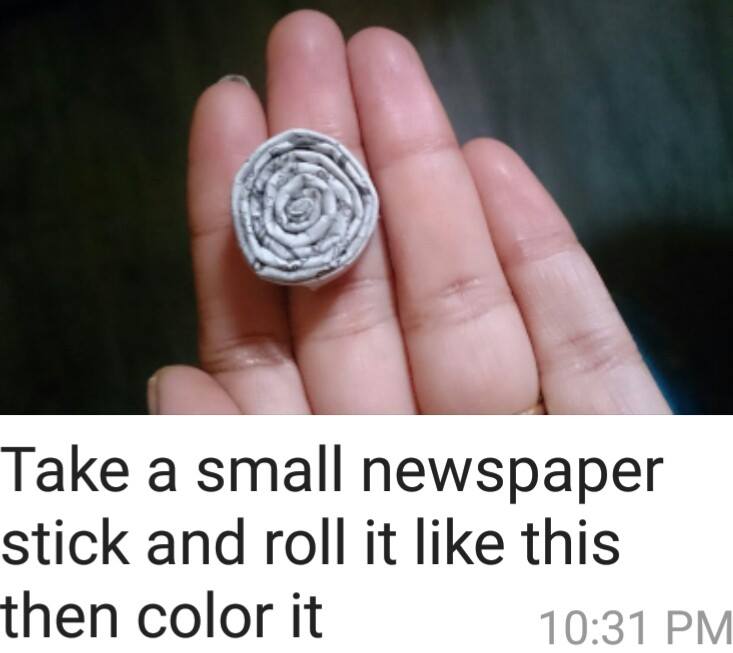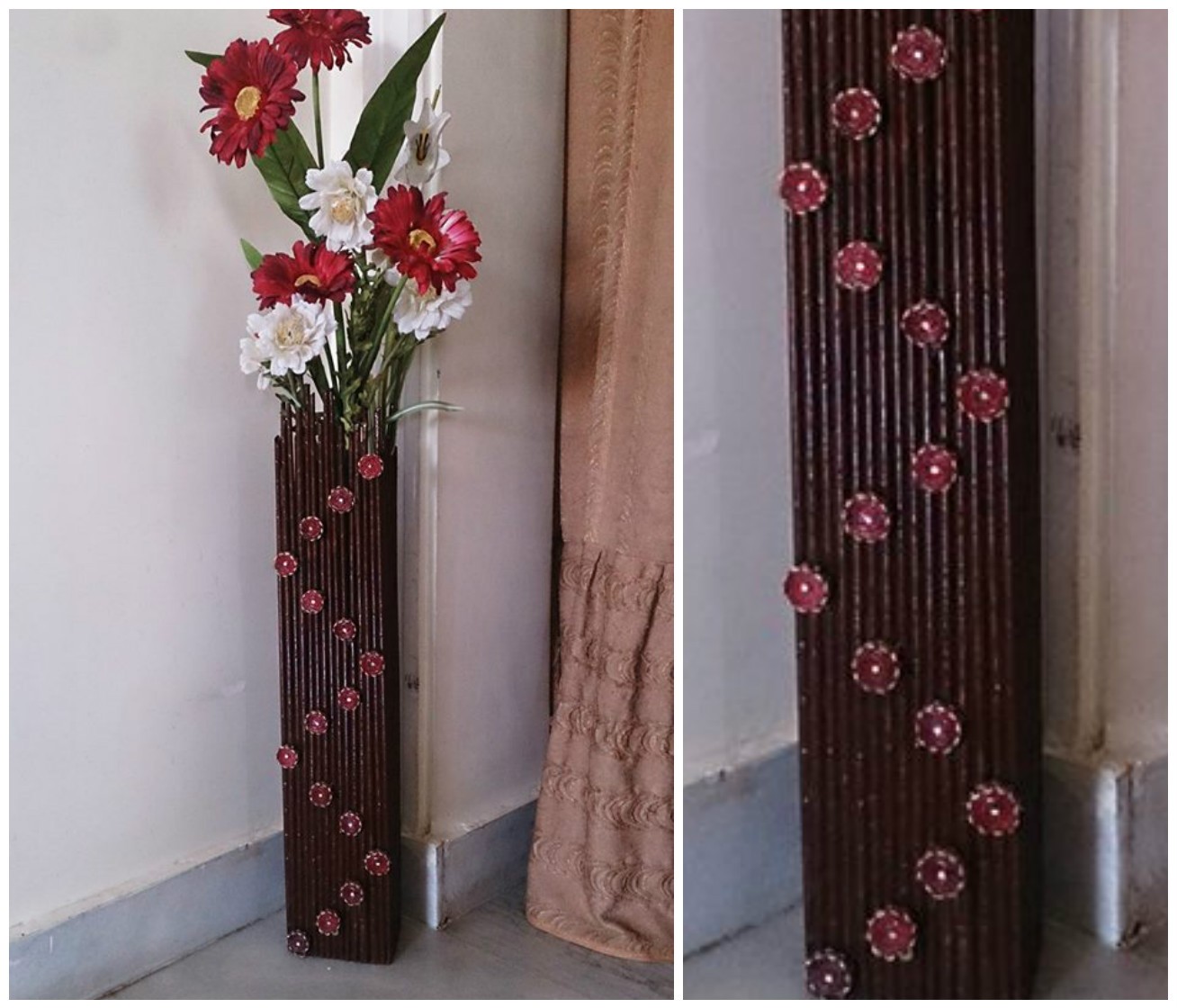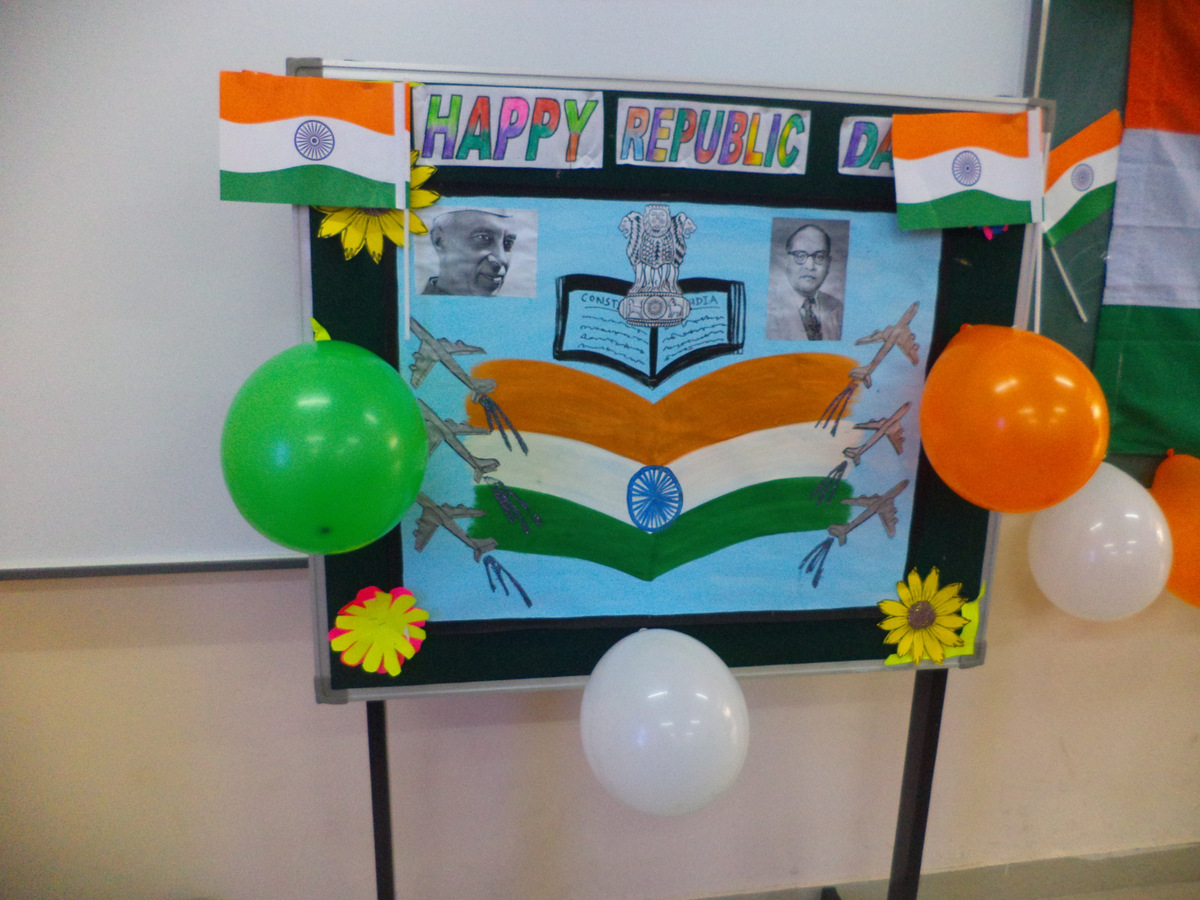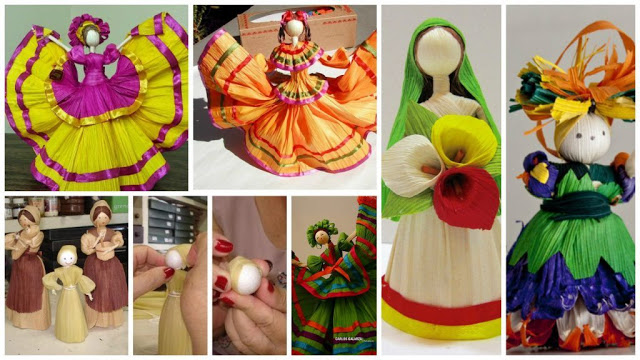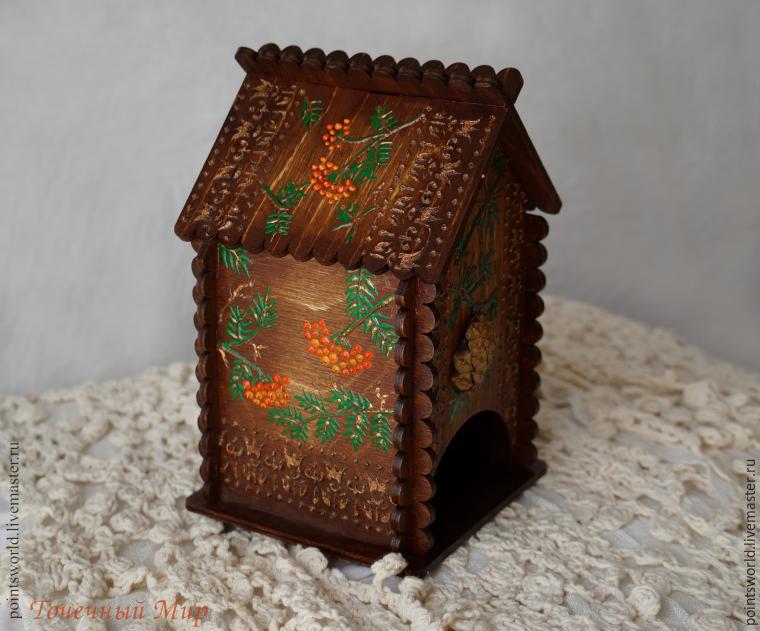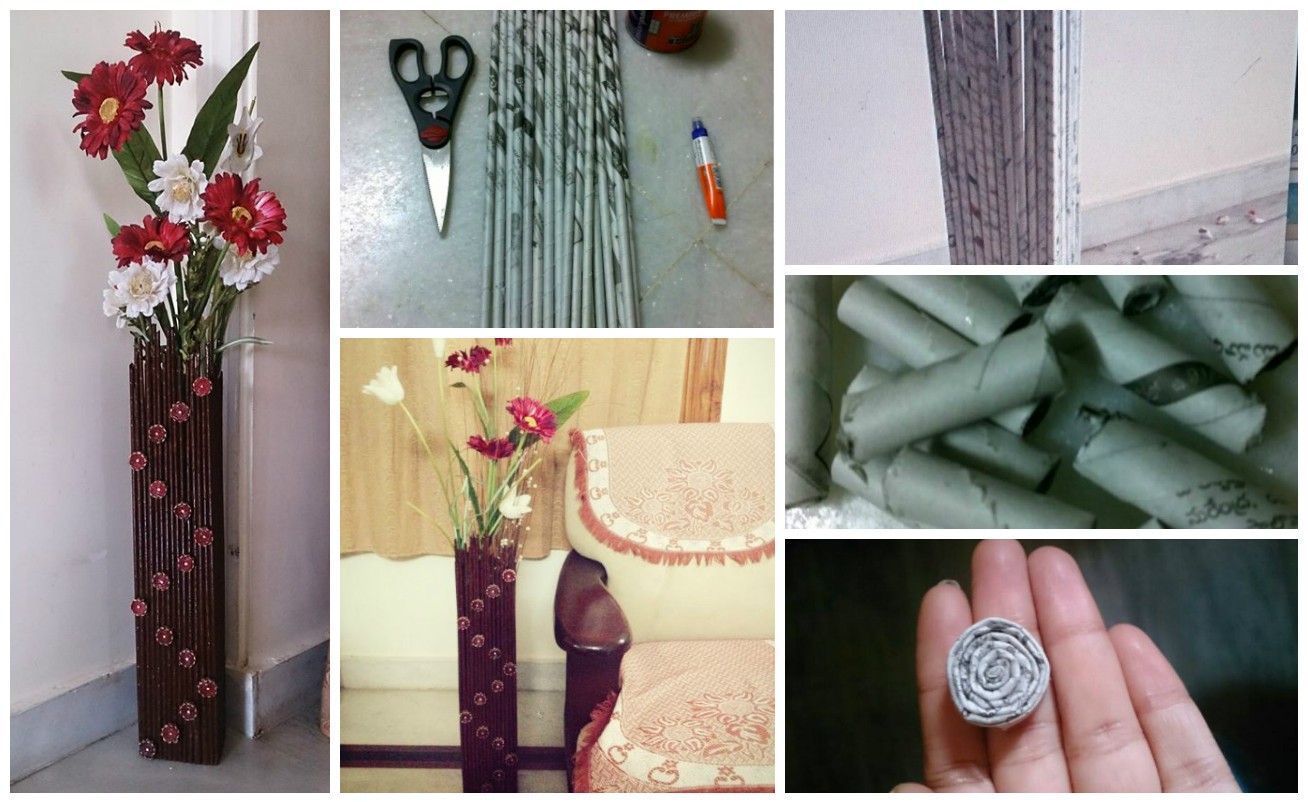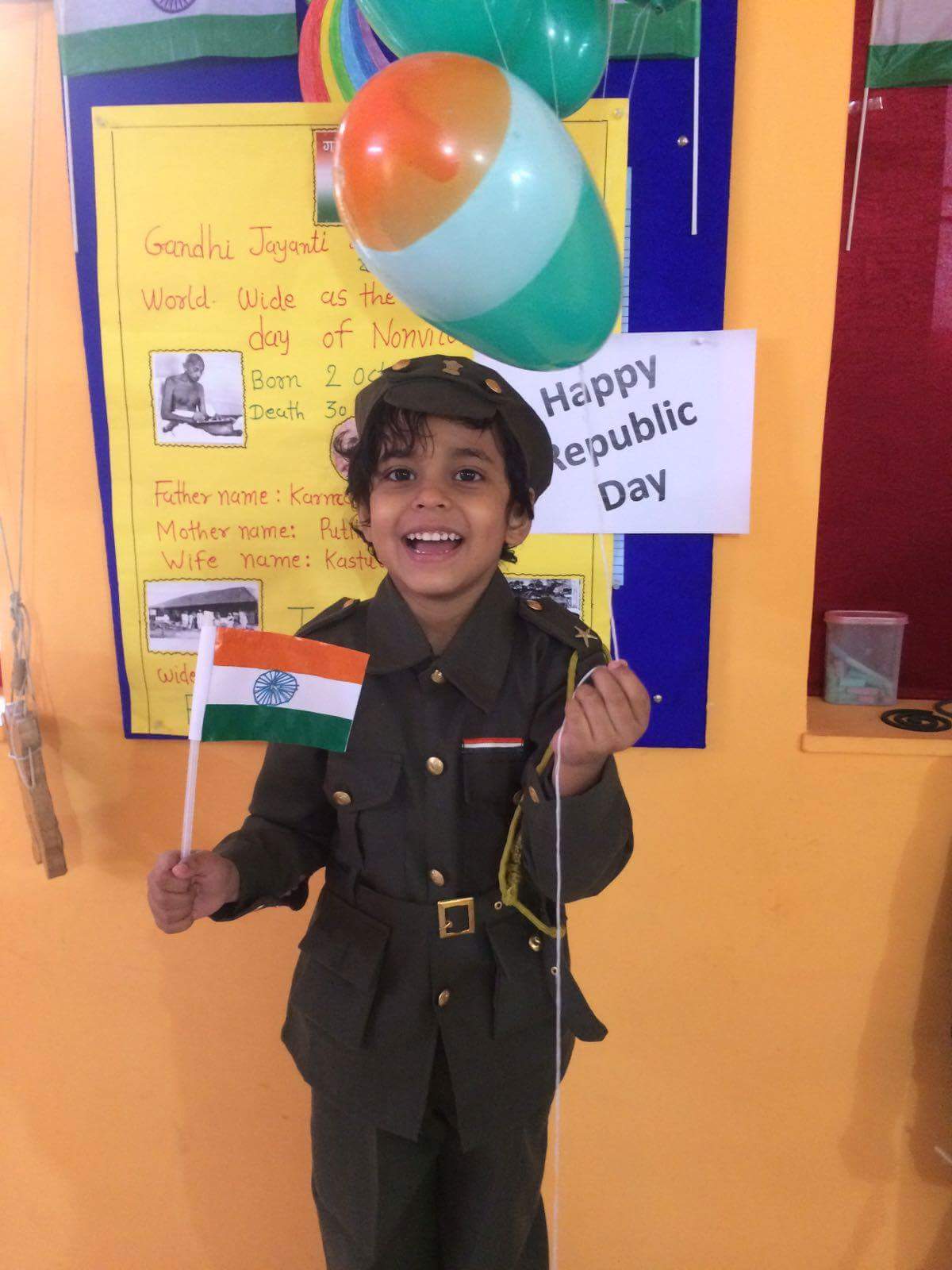
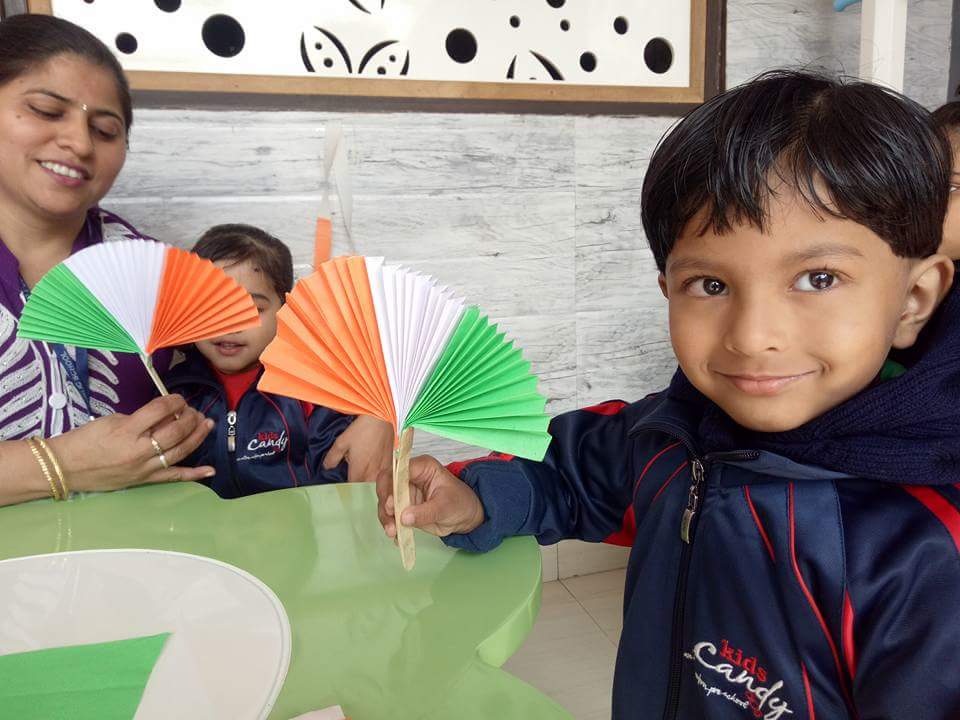

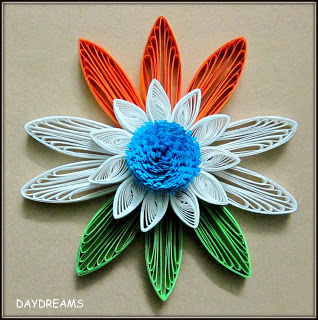
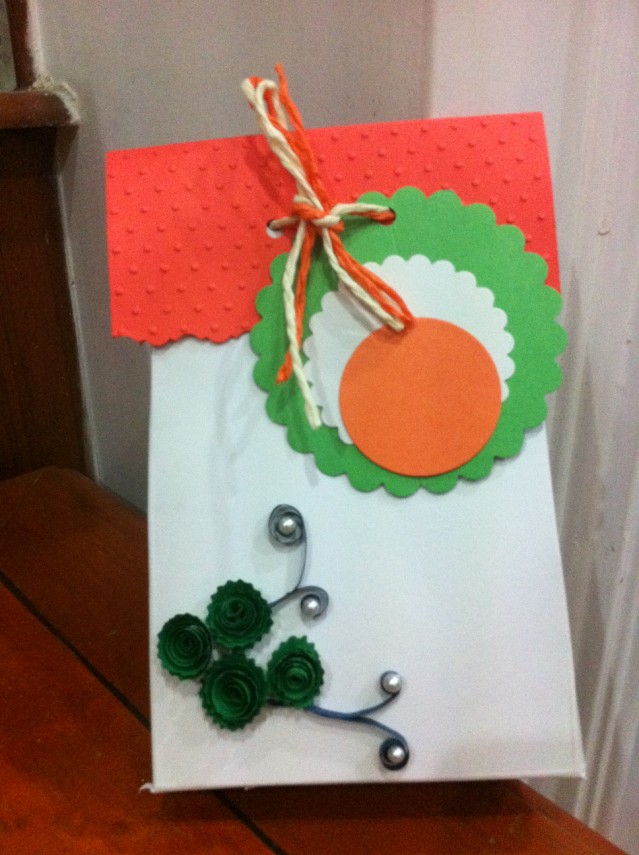


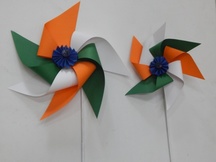

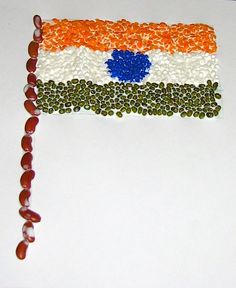
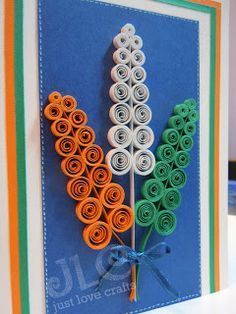

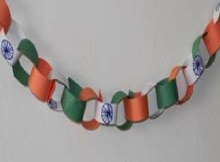
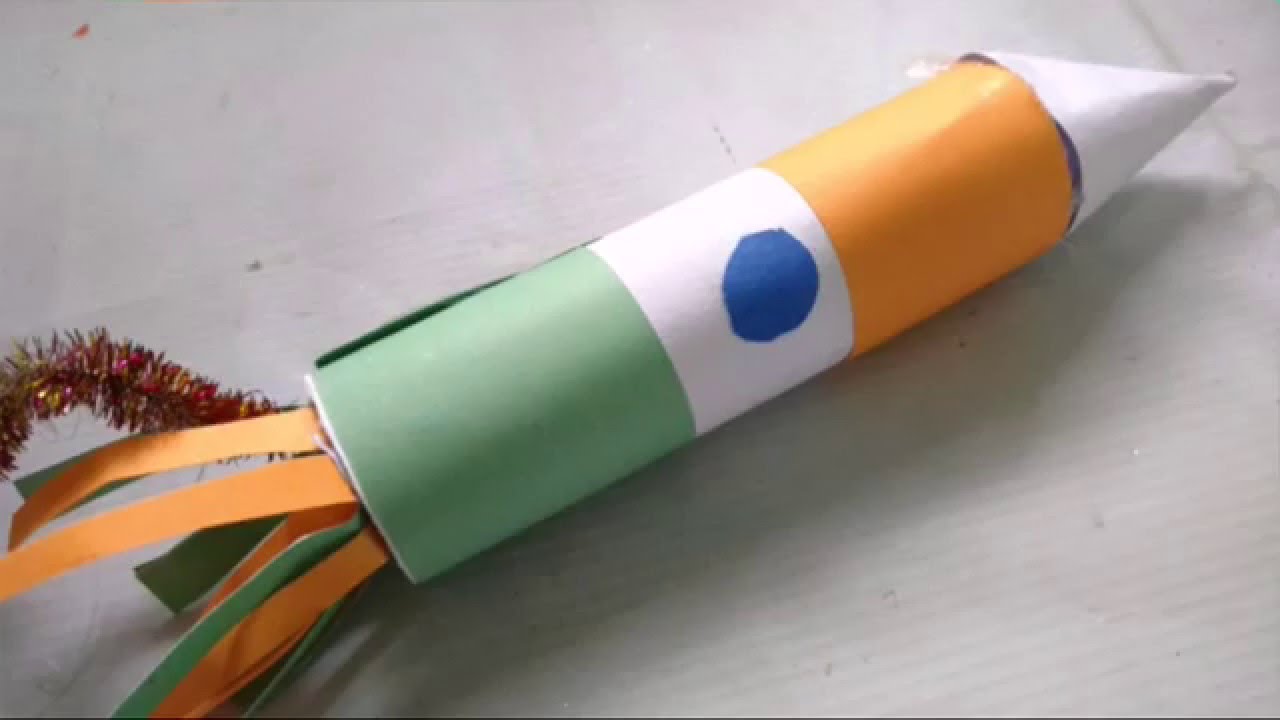
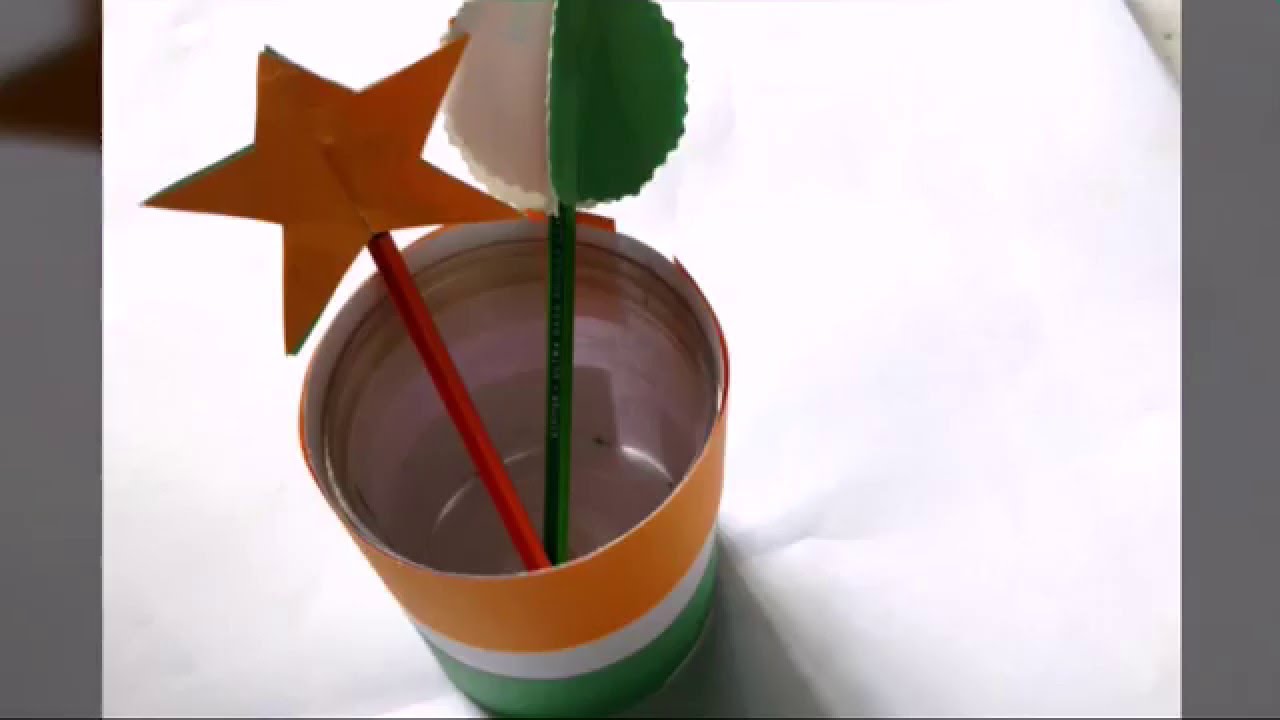

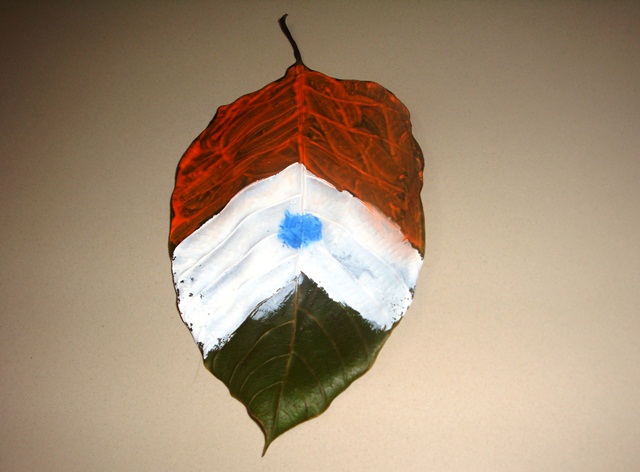

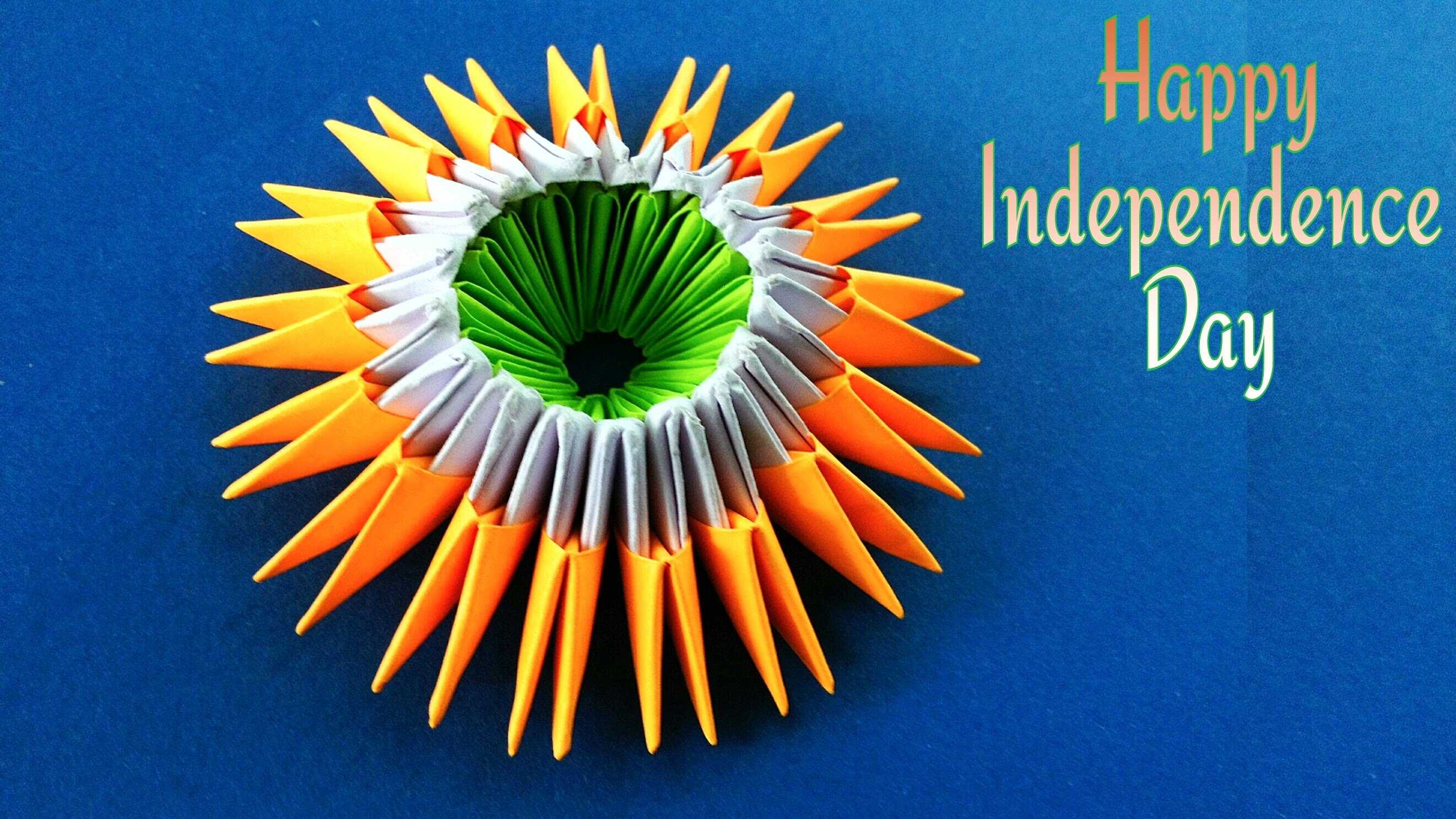


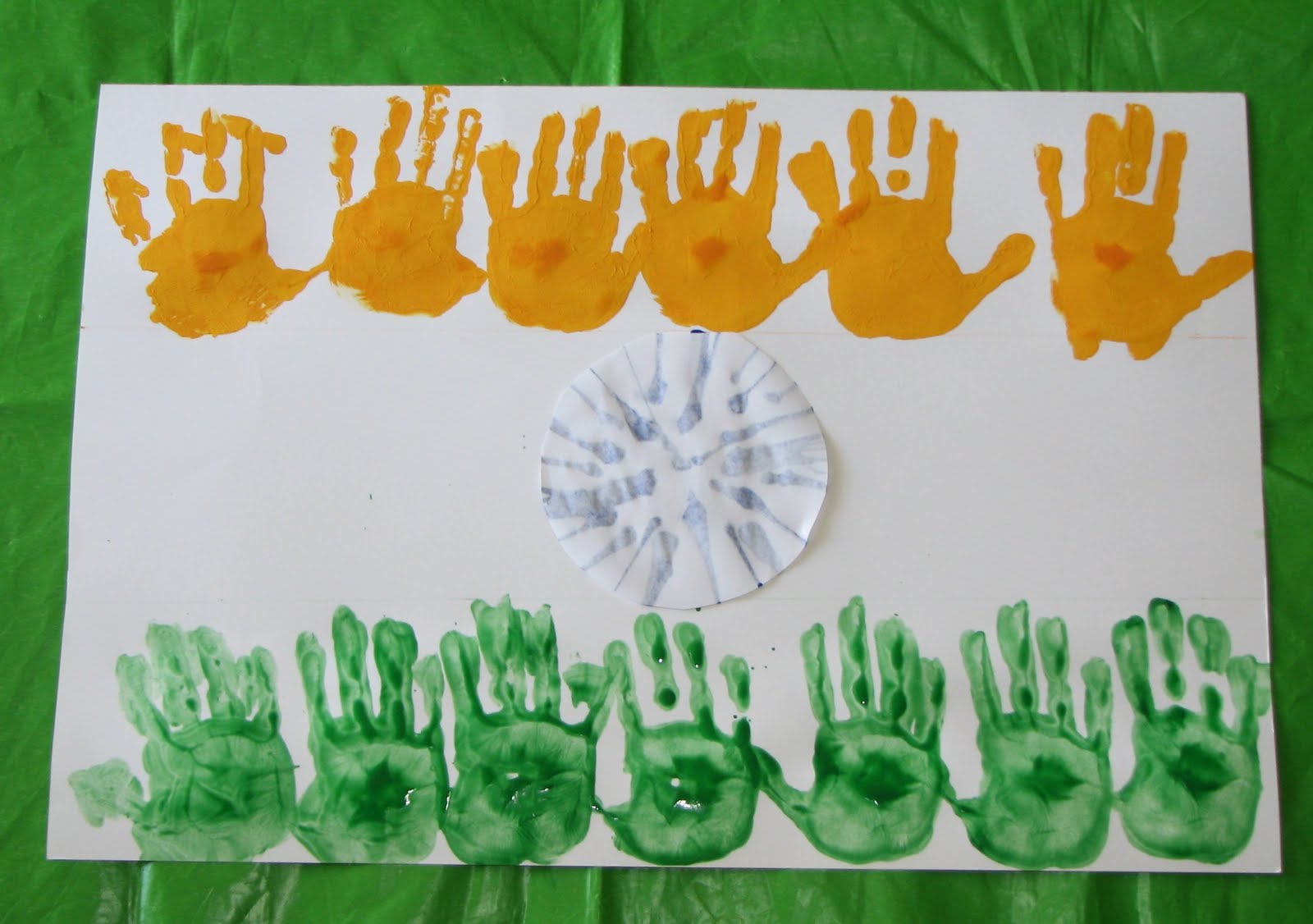

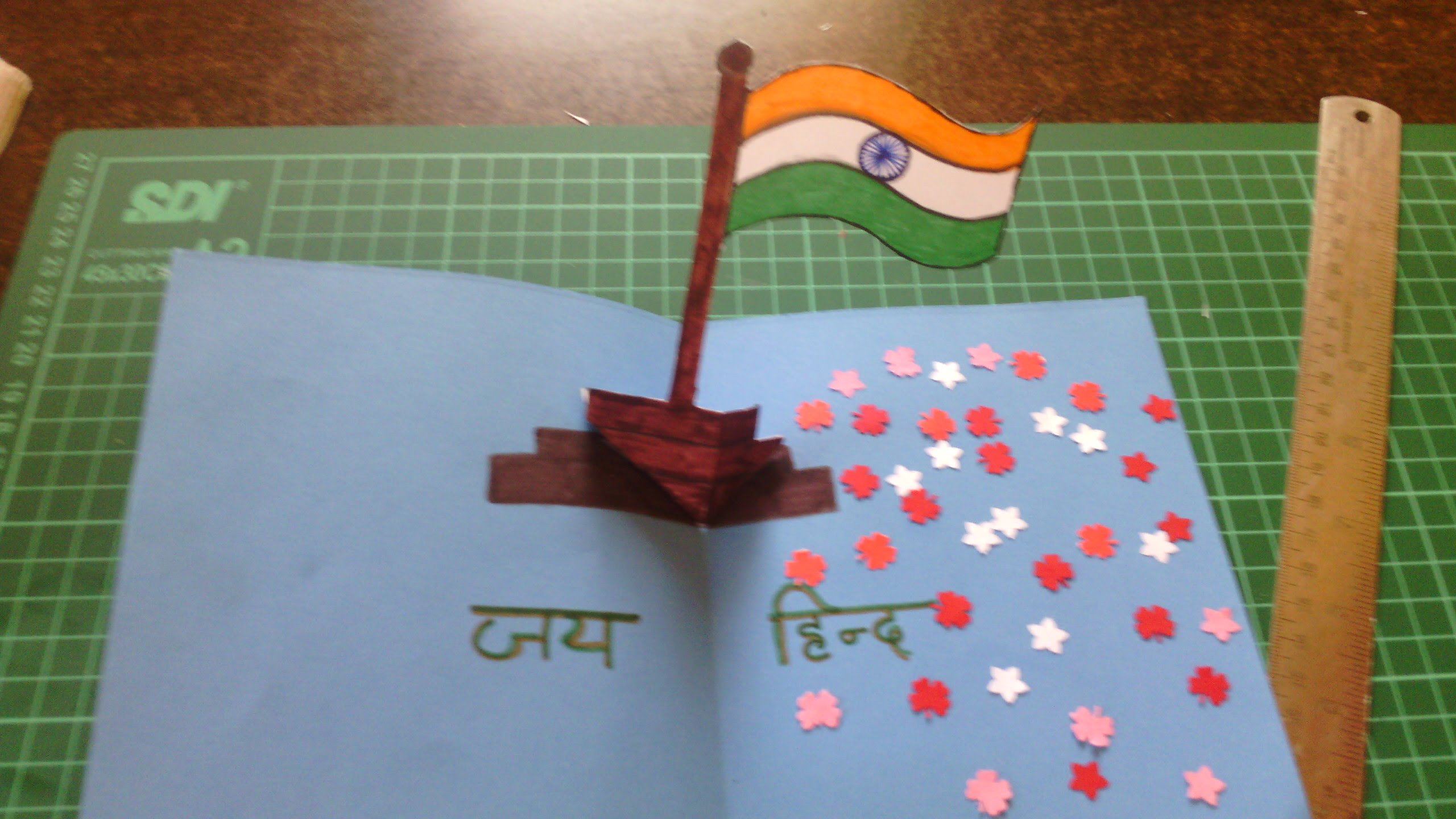
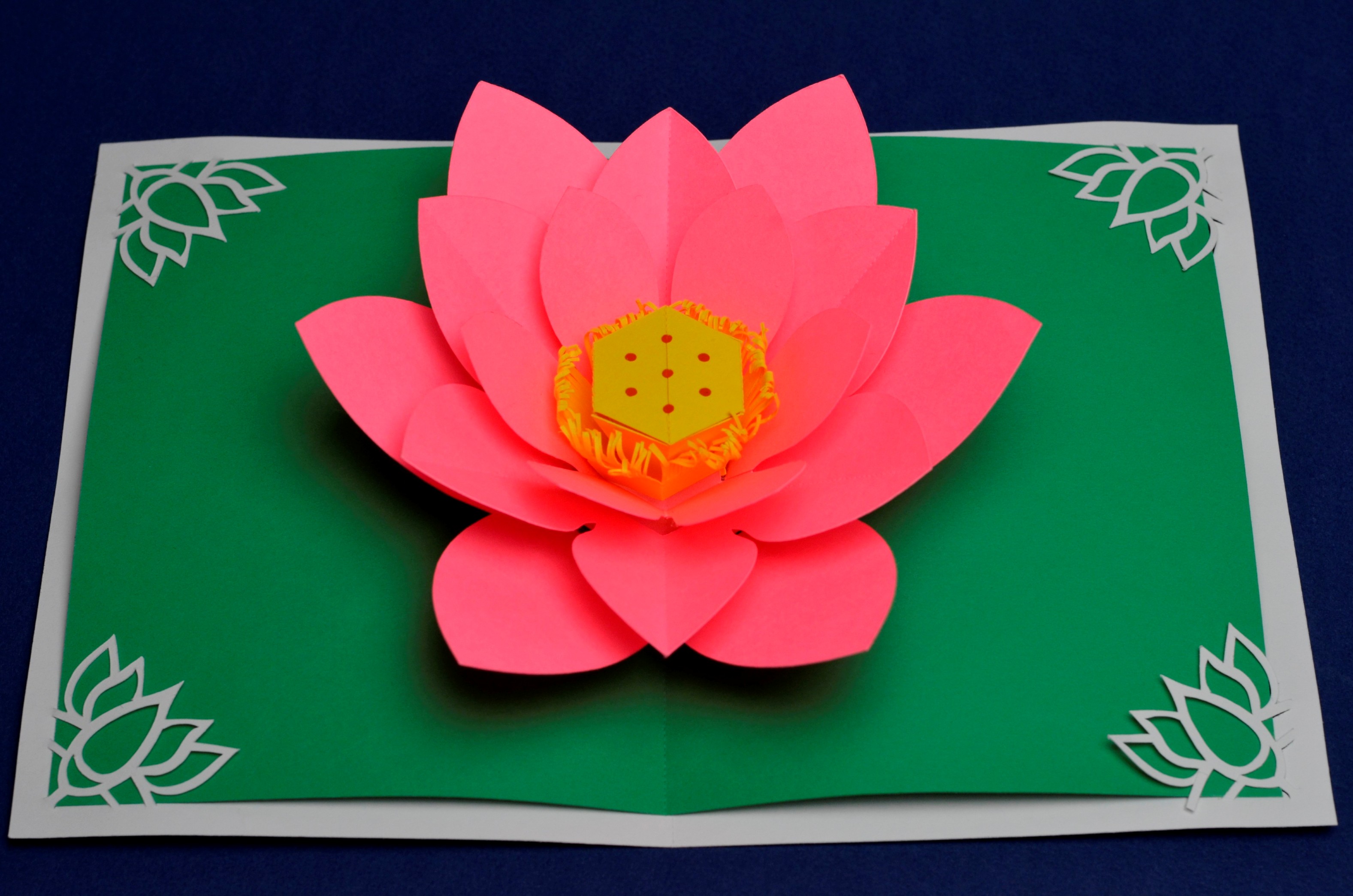

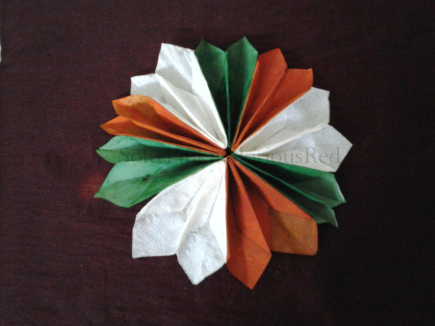
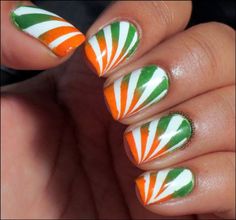
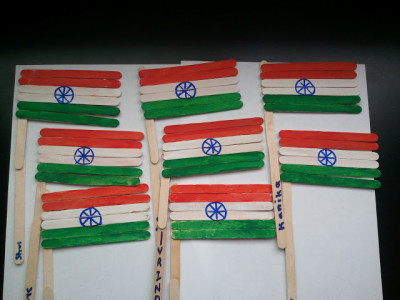
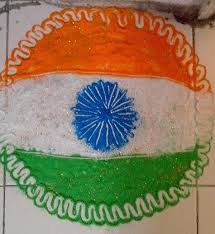
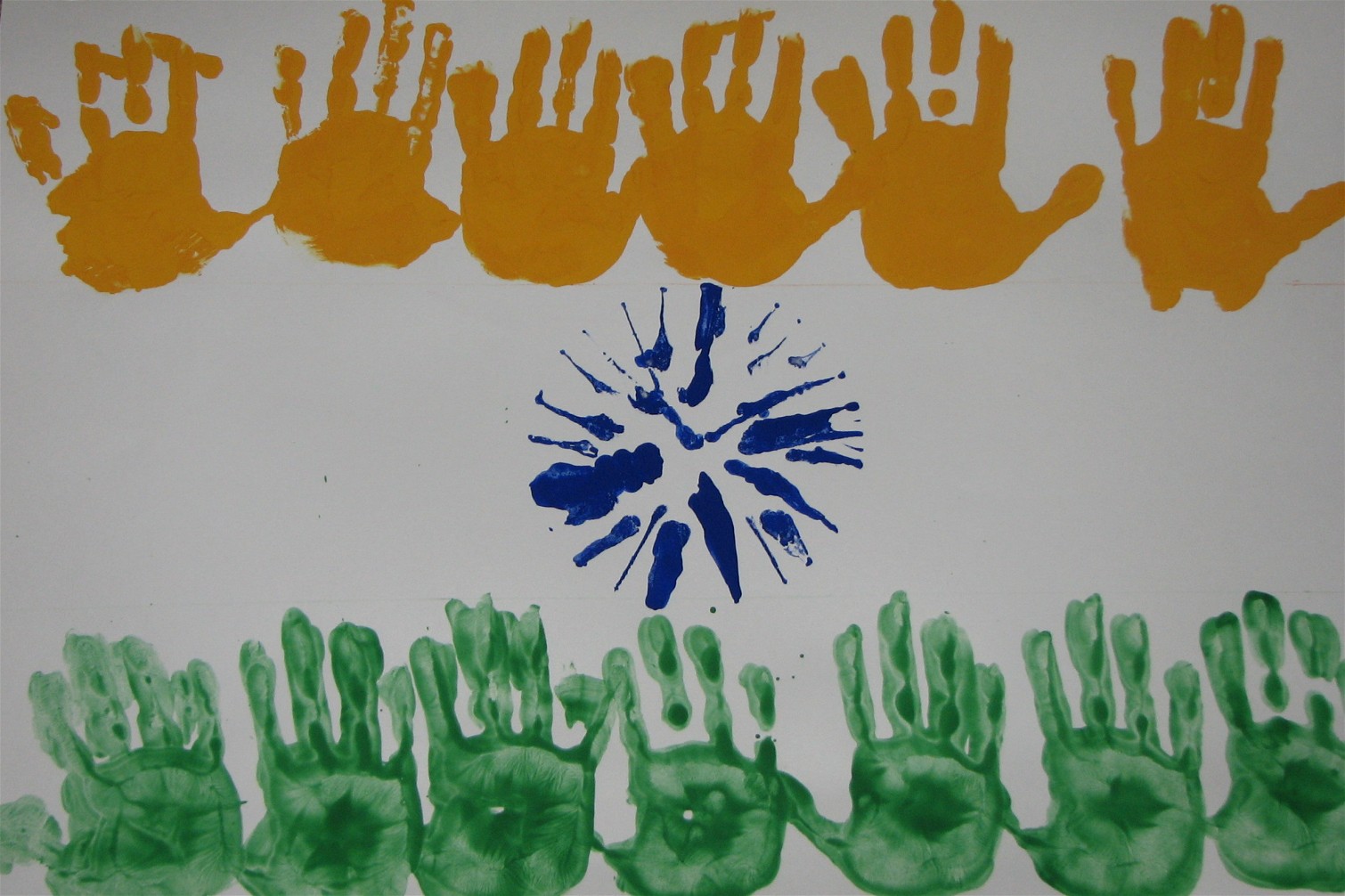



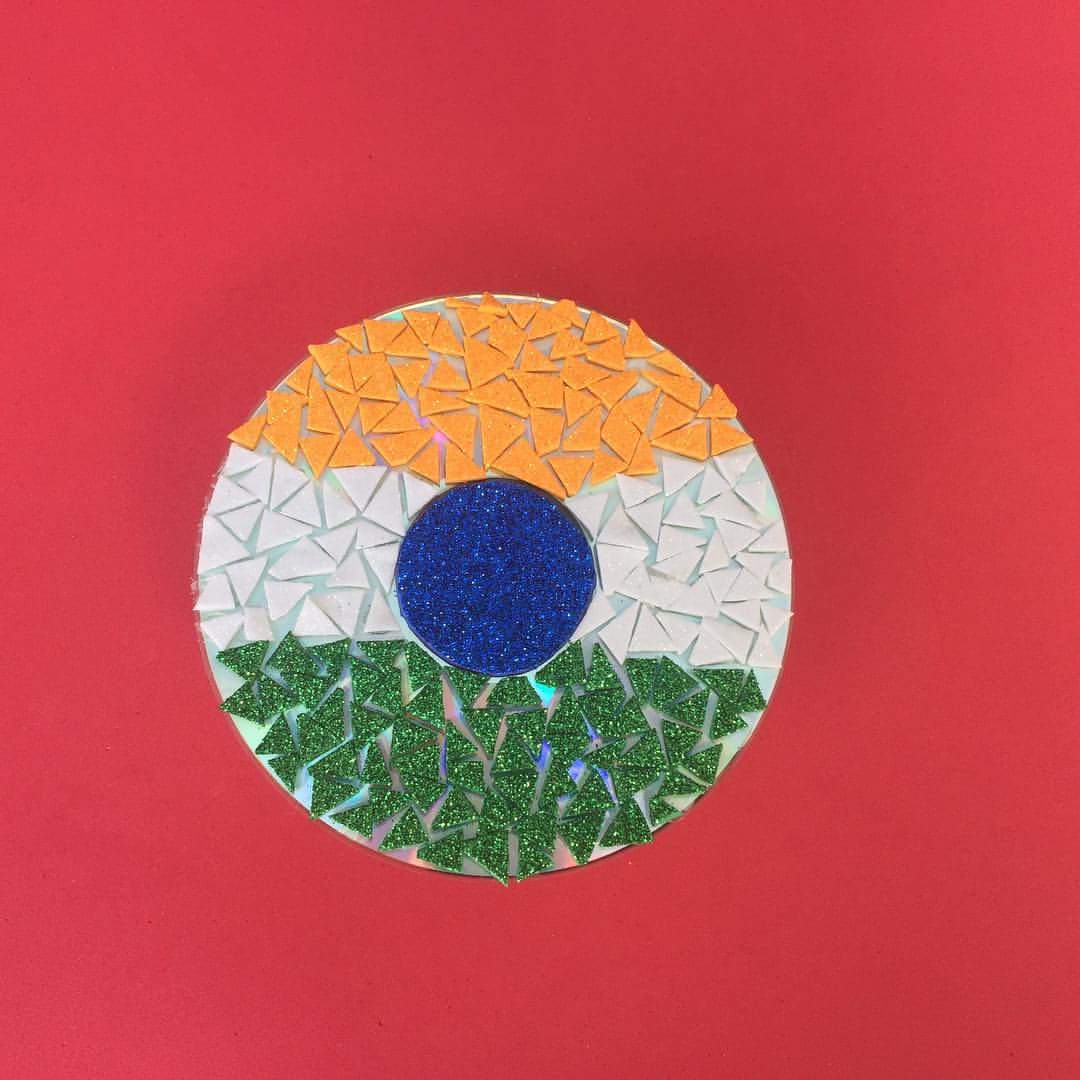



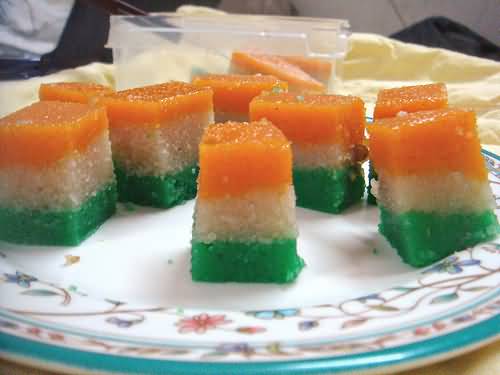
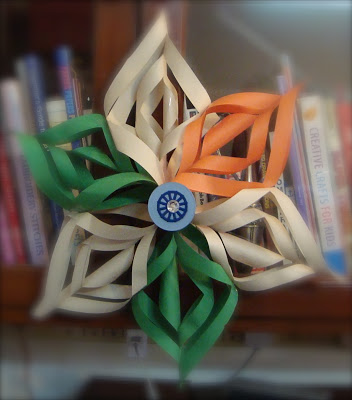
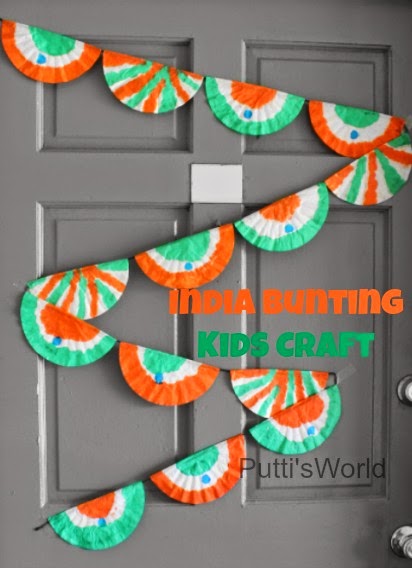
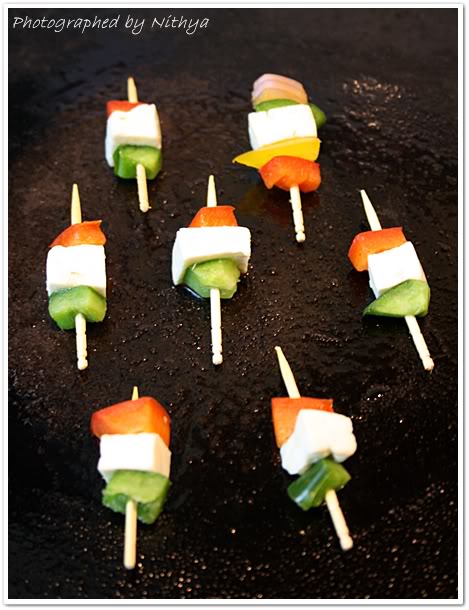
How to make doll of boiled corn leaves
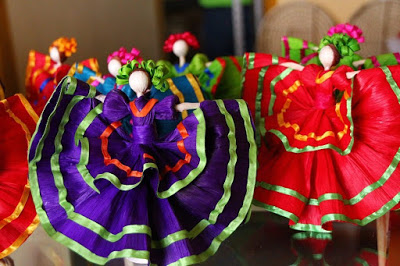 It is the Brazilian folk art. Released mess. First Ineys said that the leaves should be dry, but when we met, she used boiled leaves. Boil the leaves should be about 30 minutes. Inspiration were those two dolls that make Ineys in distant youth. Draw eyes and mouth. Wait for the complete drying of dolls and paint stain or potassium permanganate to her outfit. You can make the apron, you can handle in her something to give. Because the hand of the wire them hands, you can make some original position. This is a family of lines we have. I will say that we dry leaves and after drying, and many parts were bare steel hoses, flashlights are not as fancy, and at the hem bvysohlo so that the doll is no longer standing. I cropped hem, but the wound was not enough leaves.
It is the Brazilian folk art. Released mess. First Ineys said that the leaves should be dry, but when we met, she used boiled leaves. Boil the leaves should be about 30 minutes. Inspiration were those two dolls that make Ineys in distant youth. Draw eyes and mouth. Wait for the complete drying of dolls and paint stain or potassium permanganate to her outfit. You can make the apron, you can handle in her something to give. Because the hand of the wire them hands, you can make some original position. This is a family of lines we have. I will say that we dry leaves and after drying, and many parts were bare steel hoses, flashlights are not as fancy, and at the hem bvysohlo so that the doll is no longer standing. I cropped hem, but the wound was not enough leaves.
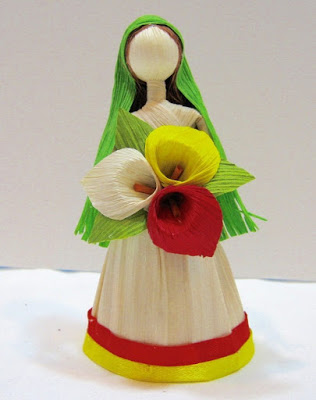

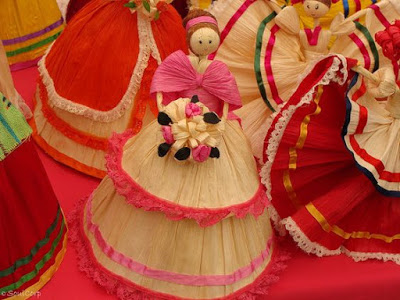
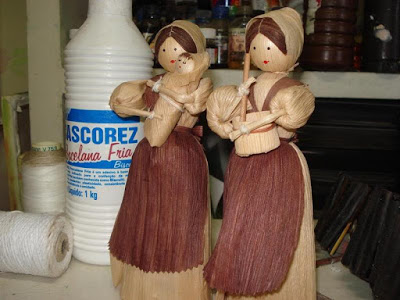
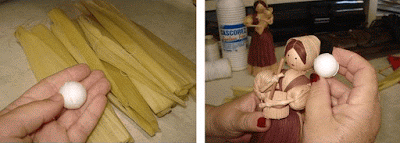
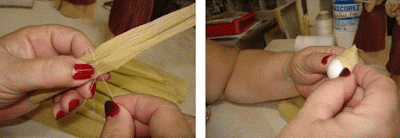
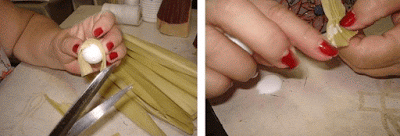

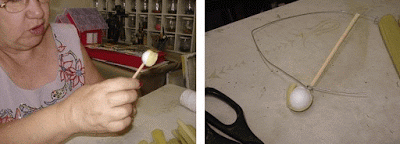
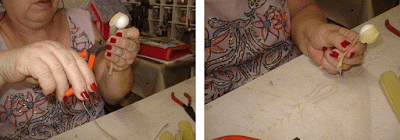

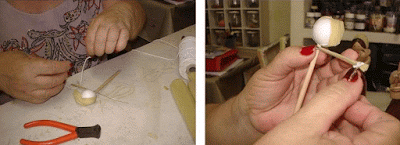
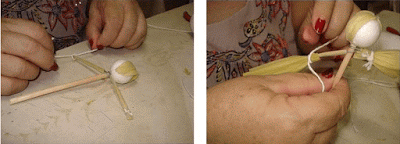
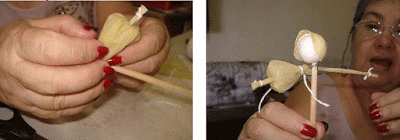
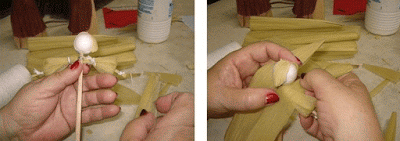

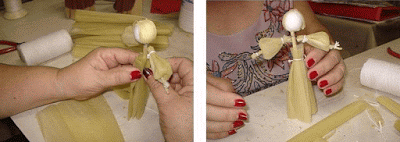
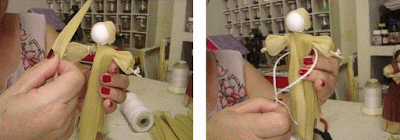
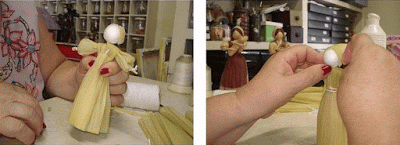

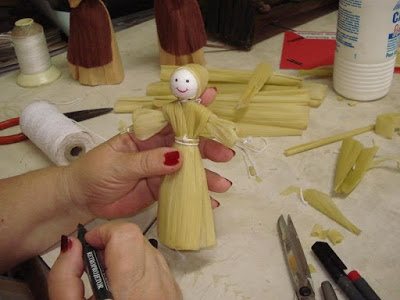

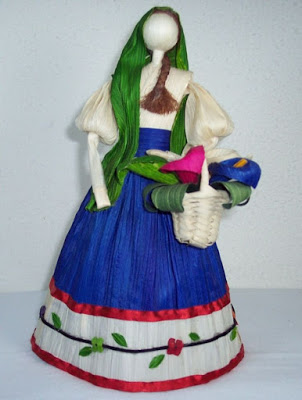
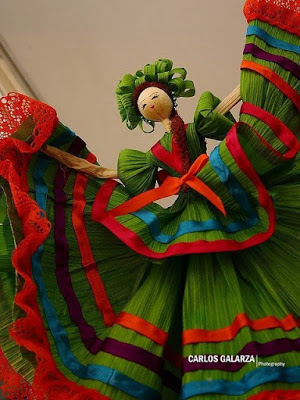



Make a papier-mache cow using an empty water bottle and toilet paper rolls – Step By Step
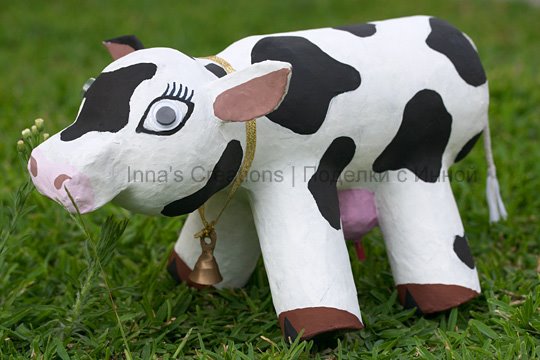
Required Material:
Two big plastic bottles, the more rigid the better
4 toilet paper tubes
Shoelace for the tail
Cocktail straws for the udder
Wooden toothpicks
Knife, scissors, and all
Crafts glue
Paint and brushes
And a lot of old newspapers
1. First of all, let’s make the tail. Pierce a hole in the bottle’s bottom, thread a shoelace through it so that its end reaches the bottleneck and tie a knot there. Then pull the knot inside the bottle.

Tie another knot outside the bottle, as close to the bottle as you can (the second knot isn’t shown in the photo). Add a crumpled piece of a newspaper to the outer part of the bottom if needed, secure it using masking tape. Masking tape is used widely in paper-mache because you can glue paper easily onto it.
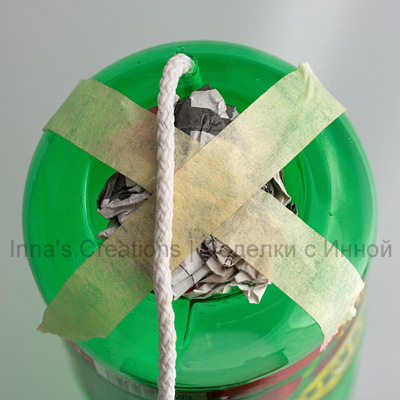
The rear part of the cow looks like this:
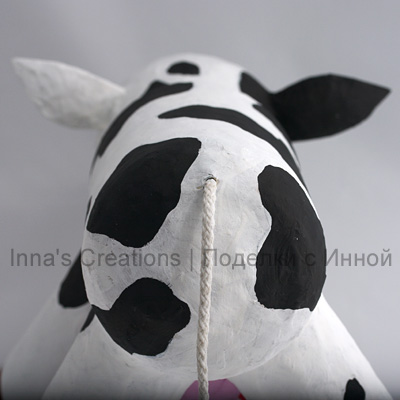
2. I used a bottle with a special shape to make the neck, but your cow can be without a neck at all, that’s OK. You have only to make ears and snout. You might also want to add two horns if you like. For the snout remove the bottle’s neck to get a little bit wider opening.
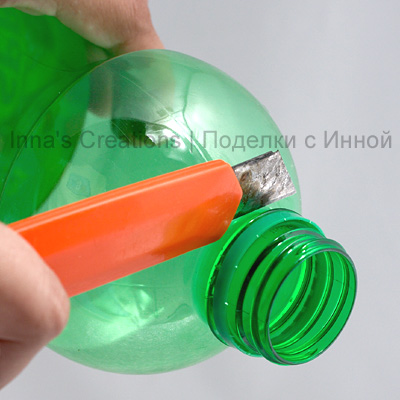
Fold a thick strip of newspaper and roll it into a tight “snail”. Leave a short loose end.
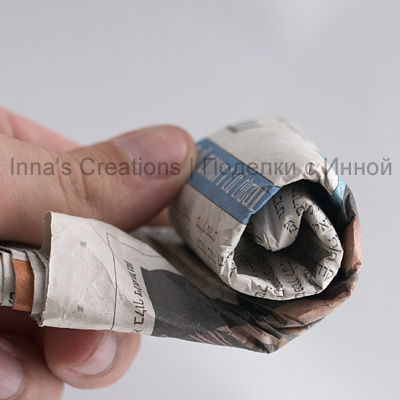
Secure the snail with a piece of masking tape, and insert its end into the opening. Attach it with another piece of tape.
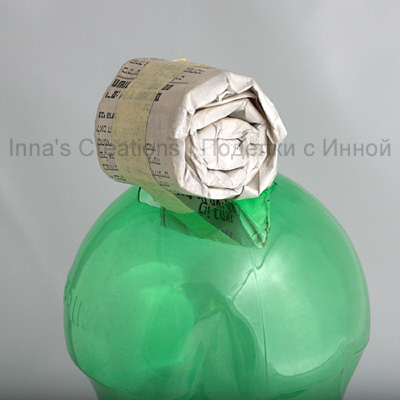
3. The ears can be made from another bottle. Leave a small rectangle at one end of each ear when you cut it out, then make two slits in the head and insert the rectangles into the slits.
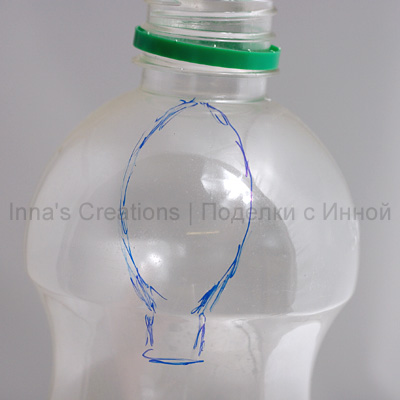
Using this trick I wanted to create the right shape and rigidness for the paper mache ears.

This is how the head looks like when done.

4. Toilet paper tubes wanted to be cow’s legs, and we let them.
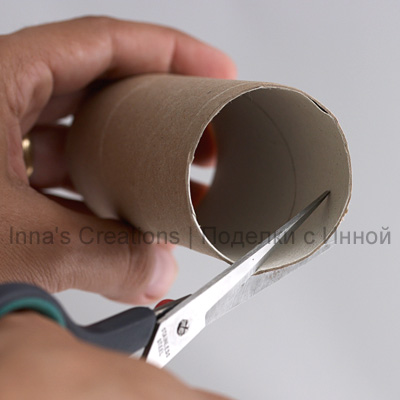
Make two semicircular cuts one opposite the other at one end of the tube where it will be connected to the bottle.
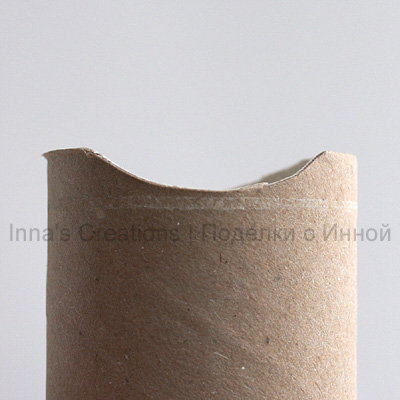
Attach the tubes using masking tape.
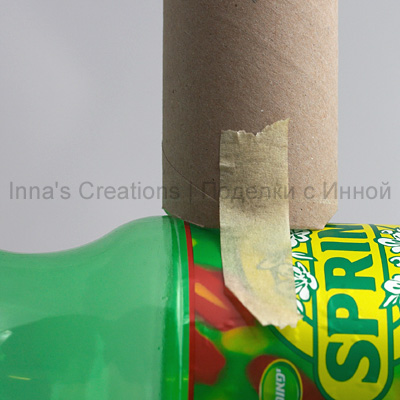
In this photo, you can see a leg with a hoof, the tail, and the udder. So, let’s make the udder.
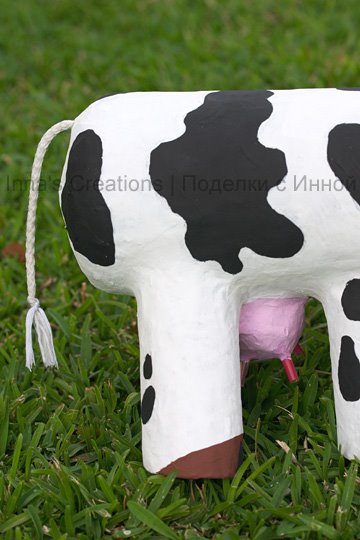
5. We are about to make treats out of drinking straws (pink ones:)
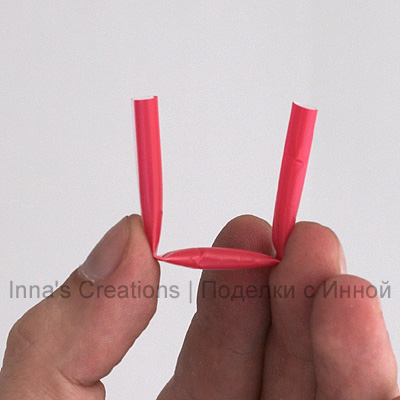
Crumple a small ball from a newspaper, then make a U from a straw and pierce two holes in the places where it bends. Insert toothpicks through these holes and stick them into the paper ball.
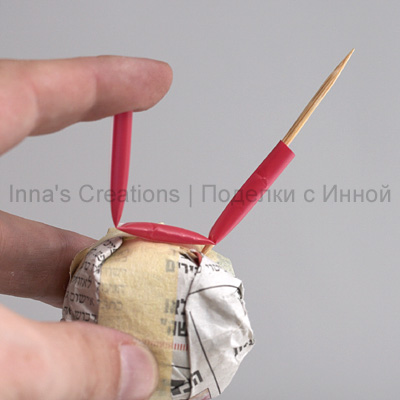
Cut the toothpicks if needed. Make another pair of teats and attach the rudder to the body. The horizontal part of U will be covered with paper.
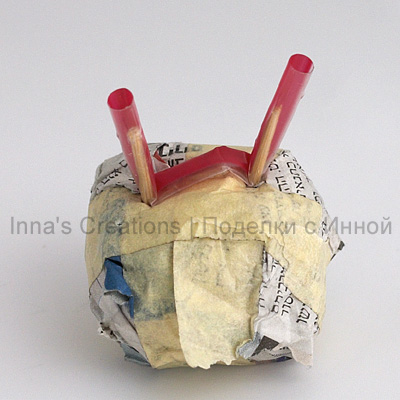
6. It’s time for papier-mache layers. We had 6 to 7 layers of pieces of newspaper dipped into craft glue mixed with water. Use a stronger glue mixture and white newspaper margins for the upper layers. You might want to check out other Web resources for basic and advanced papier-mache techniques, for example Getting Started with Papier Mache.
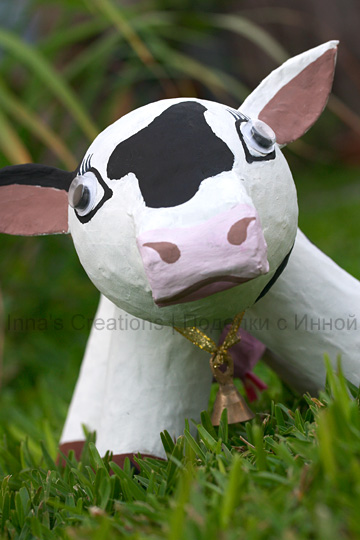
7. Decorate your cow, paint or glue a pair of eyes. That’s it.
How to make beautiful tea house
 This master class want to show how to decorate the house for tea made of plywood under the forest izbushechku without using decoupage. Master Class Time is suspended, without time to dry.
This master class want to show how to decorate the house for tea made of plywood under the forest izbushechku without using decoupage. Master Class Time is suspended, without time to dry.
When I received and gathered her hut, her bokovinki simulating log walls, immediately created an image of the fairy house in the forest, hidden amongst mountain ash and fir trees. This idea I decided to translate. We need: purchase house from plywood, water stain (I have the color mocha) for wood, textured paste, PVA glue, acrylic paint (I korichnevvaya, carbon black, bronze), glass paint, sandpaper with different grits, masking tape, stencil acrylic contours, brush, palette knife.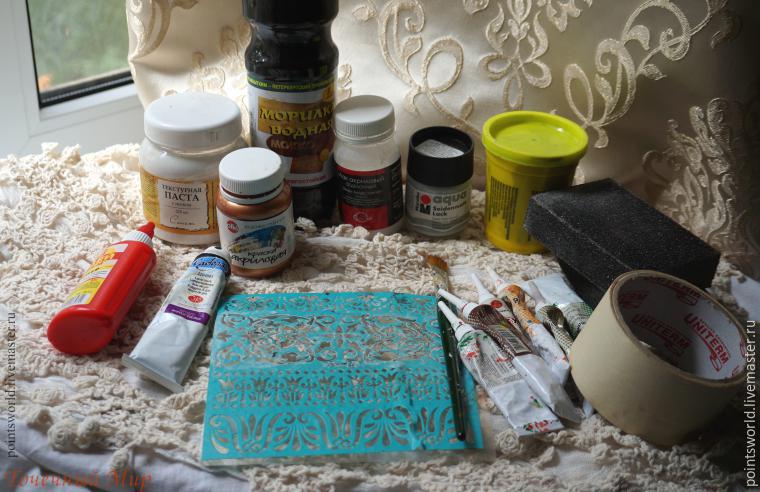
Before you begin any of collecting house and see that all the slots close to the end into each other. If something somewhere bother finalizing a file 🙂 It is advisable to remember or mark which wall from which a party to avoid confusion in the future.
Mordant for wood, I chose to paint just because of the fact that it attaches to the workpiece color of natural wood, leaving visible its “structure” (or rather, the name of this “structure” in plywood – I do not know, in general, these beautiful, “natural “streaks
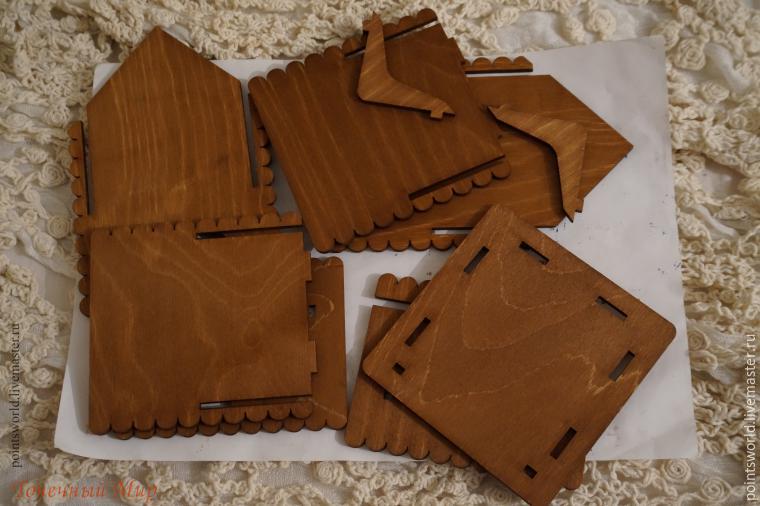 After drying the skins to properly collect and smoothness house. PVA glue construction wall between himself and the roof. I’m on the floor until pasting, for the convenience of further manipulation, but at the time of bonding of the floor wall insert so that they are not twisted. I fix the masking tape and rubber bands. I do not know how anyone, but I prefer a thin glue on the edges of the cracks and distribute a toothpick and spicy flat nail file 🙂 left to dry for several hours.
After drying the skins to properly collect and smoothness house. PVA glue construction wall between himself and the roof. I’m on the floor until pasting, for the convenience of further manipulation, but at the time of bonding of the floor wall insert so that they are not twisted. I fix the masking tape and rubber bands. I do not know how anyone, but I prefer a thin glue on the edges of the cracks and distribute a toothpick and spicy flat nail file 🙂 left to dry for several hours.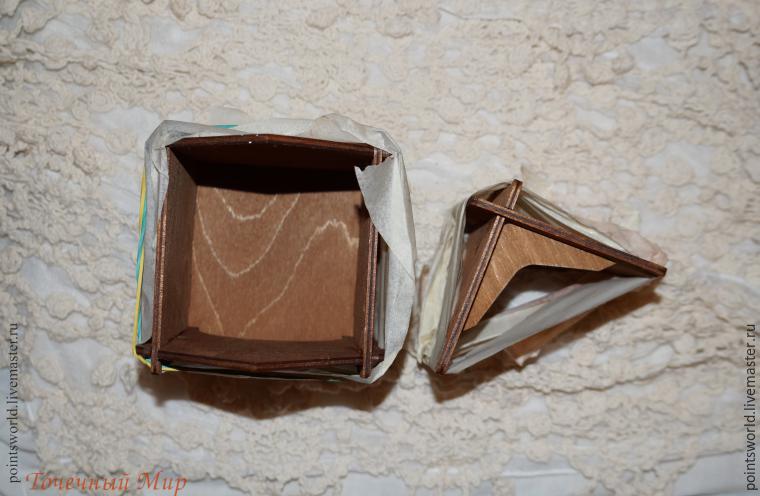 Here, at the Fair, I met with a magic effect “glow” in the decoupage works of some artists, and have long wanted to try to apply it by hand. To do this, at the center of each face of the house and the roof I carefully hides, blowing out:
Here, at the Fair, I met with a magic effect “glow” in the decoupage works of some artists, and have long wanted to try to apply it by hand. To do this, at the center of each face of the house and the roof I carefully hides, blowing out:
Then again, the whole house cover with stains, land and again the skins – the edges slightly, the center is strong. And so do a few times, until we reach the desired effect. Now we go to the application of decorative elements. Rowan mountain ash, but it I decided to do some framing patterns. I really like to do the bulk pattern texture paste. On the one hand this pattern stands out due to its volume, on the other – not too flashy and will not interrupt the main figure due to its color close to the color of the house. We spread the texture paste in a glass, add there a little acrylic paint, I took the brown and carbon black, so that in the end turned the color slightly darker edges of faces.
Now we go to the application of decorative elements. Rowan mountain ash, but it I decided to do some framing patterns. I really like to do the bulk pattern texture paste. On the one hand this pattern stands out due to its volume, on the other – not too flashy and will not interrupt the main figure due to its color close to the color of the house. We spread the texture paste in a glass, add there a little acrylic paint, I took the brown and carbon black, so that in the end turned the color slightly darker edges of faces.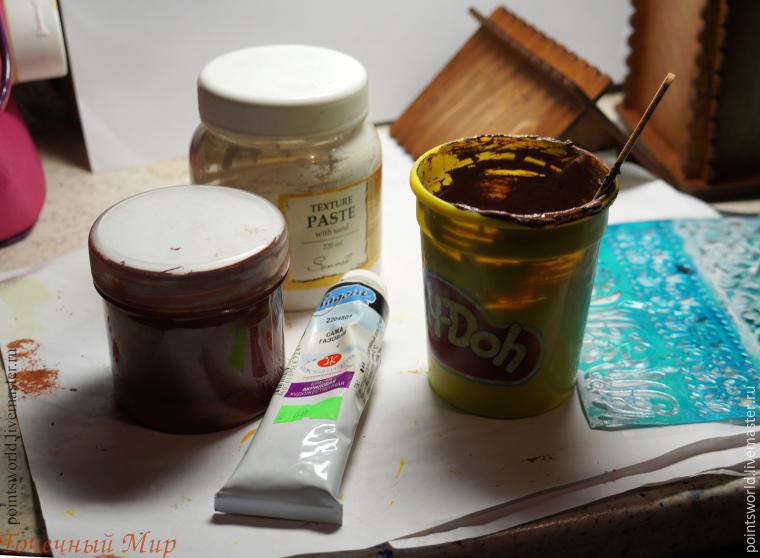 Impose a stencil (I Adhesive) and causes the paste is not too flat and not too thick. Spatula for some reason it is not convenient to apply, I put a stick for ice cream
Impose a stencil (I Adhesive) and causes the paste is not too flat and not too thick. Spatula for some reason it is not convenient to apply, I put a stick for ice cream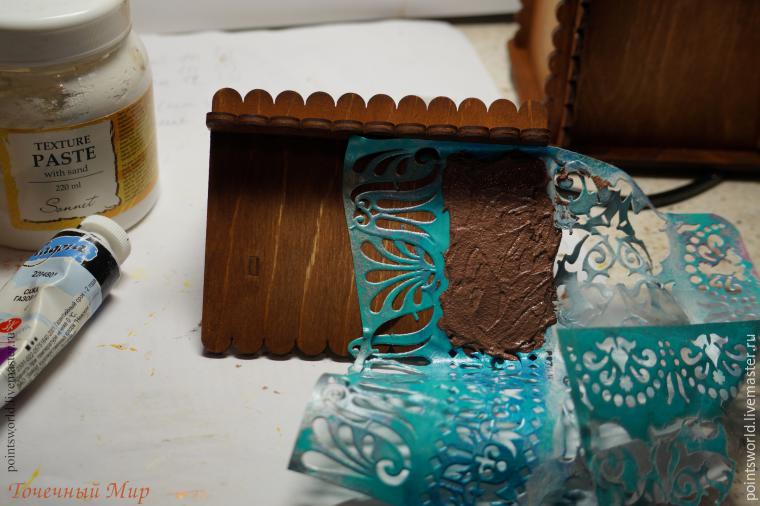

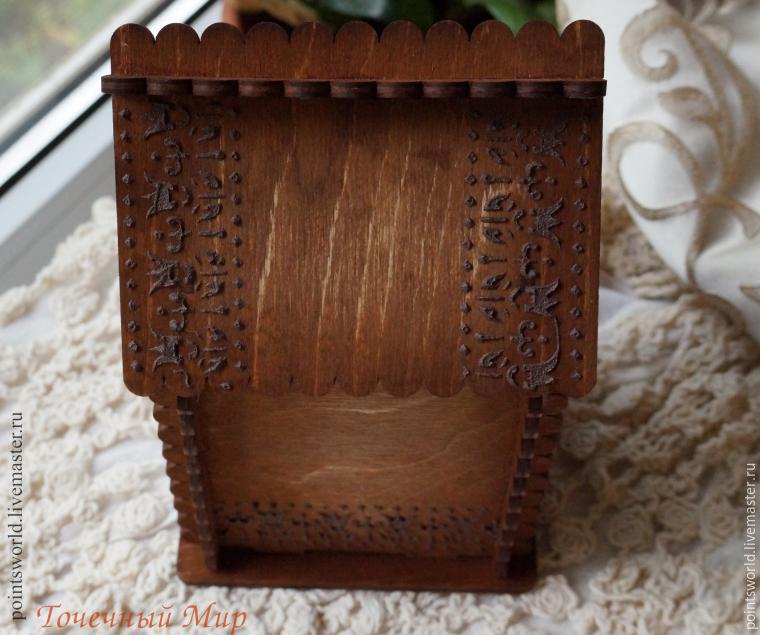
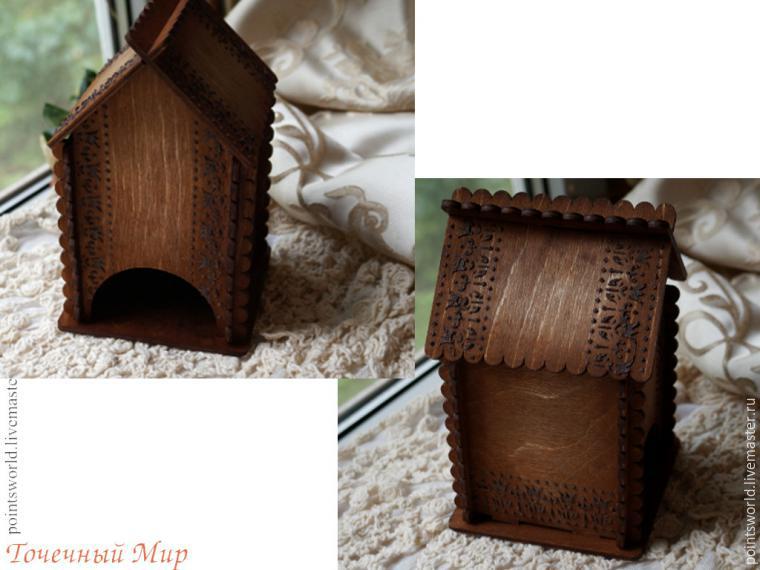 A few hours later, when the paste is dry, lightly brush the paint on the plot the bronze pattern:
A few hours later, when the paste is dry, lightly brush the paint on the plot the bronze pattern: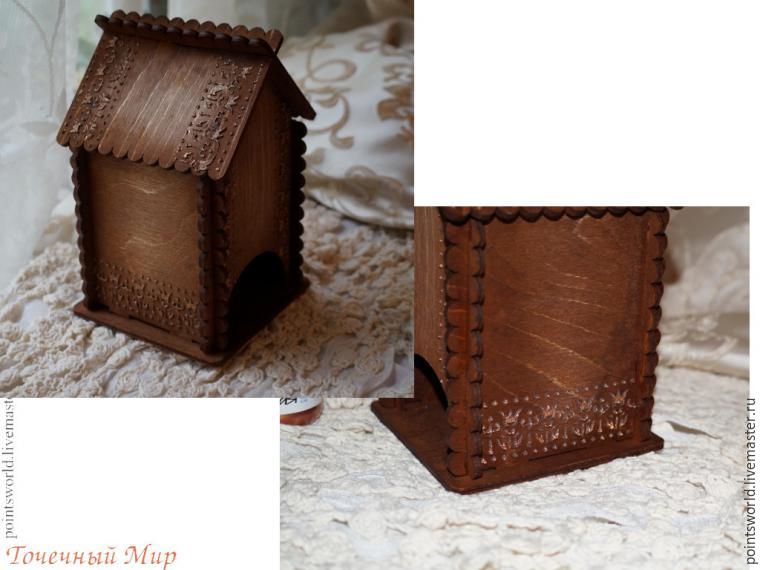
At this stage we can already stick to the base of a house.
Getting acrylic painting contours. You can pre-apply pencil drawing, I draw once: first osnovyne elements – green twigs and red-orange berries (such as on the roof), then supplement highlights (bronze circuit) and shades (brown contour) – both on the wall of the house.
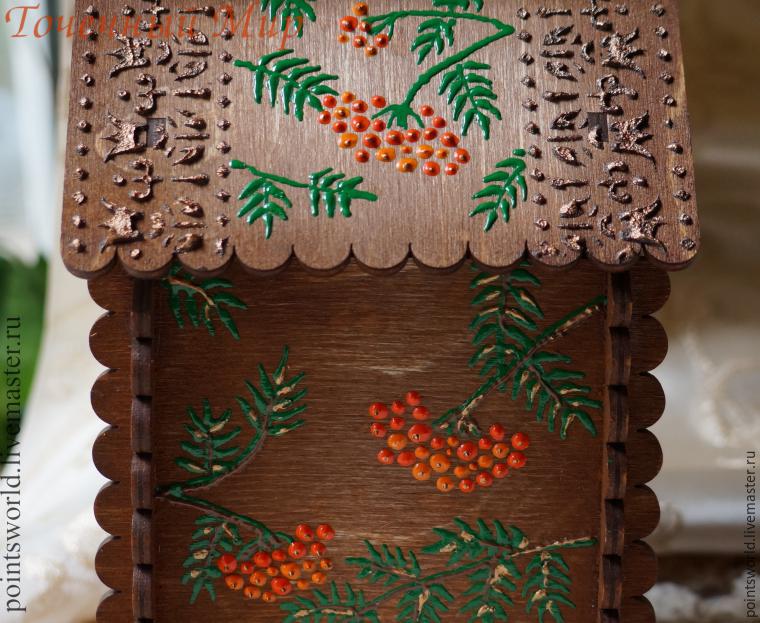 The two sides have I done with rowan, the front and rear wall has decided to do with pine branches. To use real pine cones can be. I cut them in half with a knife, choosing the appropriate items.
The two sides have I done with rowan, the front and rear wall has decided to do with pine branches. To use real pine cones can be. I cut them in half with a knife, choosing the appropriate items. Please outline the location and paste the bumps. So they stuck close, grind and align the direction of bonding bumps skin. Then dorisovyvat pine branch. First again osnovyne elements – green branches and needles as they dry out a bit, complement other flowers, dried needles bronze color.
Please outline the location and paste the bumps. So they stuck close, grind and align the direction of bonding bumps skin. Then dorisovyvat pine branch. First again osnovyne elements – green branches and needles as they dry out a bit, complement other flowers, dried needles bronze color.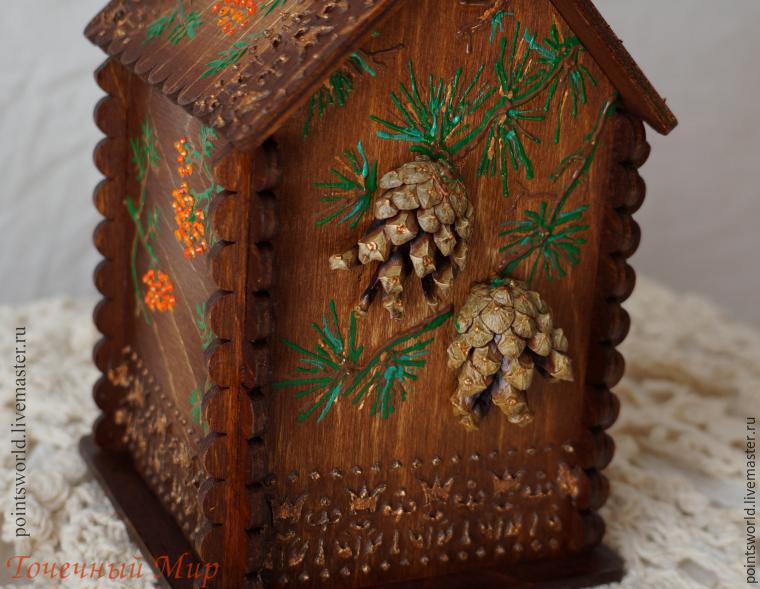
When the paint dries, pass stain again over all edges of the house, including the bulk ornament, leaving intact the main pattern to further highlight the effect of “glow” from the center faces. The whole house is covered with lacquer in several layers with drying of each layer.
Forest hut ready! To enhance the effect, you can drop of essential oil of fir, spruce, pine or cedar.

DIY make newspaper vase
